






















Tommy Housman
Creative Directors
Auden Phillips
Nina Wilson
Designers
Abbey Kyle
Auden Phillips
Kennedy Kain
Konner Staley
Myia Payne
Allison Borchard
Nina Wilson
Ale Espana
Madison Adams
Editor
Collin Wilson
Writers
Javad Dehghan
Gabriel Long
Rachel Hoke
Myia Danek
Bev Rowley
Tommy J Housman
is the University of Evansville’s student magazine. It is written, edited and designed by and for UE students and published six times during the academic year. Circulation is 1,500 distributed to 18 campus locations and housed online at www.crescent.evansville.edu
The Crescent is funded through advertising sales and a subscription fee paid on behalf of students by the Student Government Association.
Crescent Magazine welcomes letters from UE students, faculty, staff, administrators and alumni, but material the CMEB regards as libelous, malicious and/or obscene will not be published. Letters should not exceed 250 words. For verification, letters must include the author’s name, class standing or title and email address. Crescent Magazine does not print anonymous letters or those that cannot be verified. Letters will be edited as needed.

I’m In A Co-dependent Relationship With My Youtube App
Eternal Love, Eternal Escape A Farewell to Classics
Winter Survival Tactics
Taylor Johnson
EDITORIAL POLICY:
John Proctor Is The Villain
Grace Burnell
Madison Adams
Grace Gleisner
Heidi McCombs
Abbey Kyle

Zorah Mehrzad
Lucas Jablonski
Photography
Never Again: Gun Violence in America

Commentary expressed in unsigned editorials represents a consensus opinion of the magazine’s Editorial Board. Other columns, reviews, articles and advertising are not necessarily the opinion of the CMEB or other members of staff.
Alison Gansman
Seeing Her Is It Too Late?
The Loop
Faculty Spotlight Dr William Miller
Harlaxton Haze


& COPYING
Tommy J Housman
Illustrators
Guldana Karman
Keziah Long
SOBA, University of Evansville, 1800 Lincoln Ave., Evansville, IN 47722
Editorial e-mail: th208@evansville.edu www.crescent.evansville.edu facebook.com/UECrescentMagazine twitter.com/crescentmagazi1 instagram.com/UEstudentmedia
Project ARTICHOKE, Project MKUltra, & Operation
Midnight Climax
Best Buds As A Best Bud
Humanoid Robots: Navigating the Robotic Revolution
Coloring Page
Zorah Mehrzad
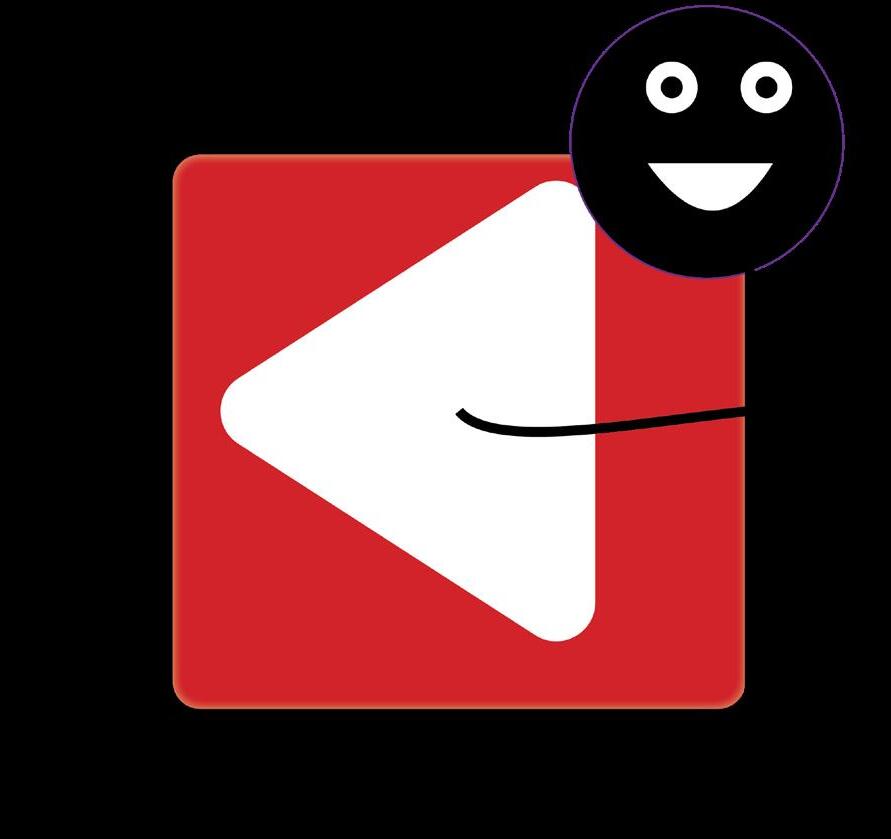
I usually balk at two-hour-long movies. An hour and thirty minutes are pretty much my limit unless it comes to something like – I’m Thinking of Ending Things or Arrival – which is to say, sometimes the media is thrilling enough to keep my attention. That, or my younger sister, agrees to watch it with me. I’m not good about committing to long run-times alone…, which is what I would say if I were a liar.
Two-hour-long YouTube videos are, to me, perfectly respectable. The longest YouTube video I’ve ever watched was someone’s entire play-through (no commentary) of “Detroit: Become Human,” an eight-hour-long journey that took me and my sister multiple days to get through, but it was worth it seeing the most satisfying conclusion of the game come to fruition. Most YouTubers I subscribe to are in the habit of only making very long videos, which is the curse of enjoying commentary and video essay spaces. Of course, then I
can say that I’ve absorbed nearly five hours’ worth of information on some of Kick’s worst content creators to people who have no idea that Kick even is, or I can recommend a very in-depth think piece about how the myth of vaccines causing autism came into being. Ultimately, I’ve managed to amass a cache of pretty much useless information if the person I’m talking to isn’t aware of or at least a little bit interested in either Internet goingson or socio-political conflicts. Which, naturally, demands to be shared.
So, here’s a list of just six YouTube videos out of the many hundred I’ve seen this year alone. Some are personal favorites, and some are new finds, but all will teach you something, or at the very least, keep you company.



To start, my younger sister wants credit for introducing this documentary gem to me. So, here. Credit. Moving on!
“The Reindeer Herders” is a very sweet slice-of-life documentary following two brothers, seven-year-old Zakhar, and nine-year-old Prokopy, as they learn how to carry on the traditional Dolgan duties of reindeer herding and, much to their chagrin, mathematics. It’s not explained much in the video itself, but the documentary was filmed to show how the Krasnoyarsk region government has been adapting the schooling system for nomadic families, changing it from boarding schools to “mobile schools,” where teachers go and live in their student’s homes while they teach. But honestly, the best part of the whole thing was when Prokopy climbed up into a tree and refused to come down. Or maybe when Zakhar struggles for two minutes trying to get a frozen reindeer corpse onto a sled before falling over onto the ground in exhaustion. All in all, it is very cute and very wholesome, maybe skip the one slaughtering scene if you’re squeamish, though.
It feels important to note that a Grayzone journalist, Jeremy Loffredo, was illegally taken into Israeli custody on October 8th and is being detained in Israel until at least October 20th while the courts investigate him for “aiding the enemy in a time of war” after he reported on Iranian airstrikes hitting Israeli military installations. Loffredo is a Jewish American citizen, though neither identity seems to matter much to the State Department, which is not demanding his immediate release. As for the documentary itself, it’s an essential watch for all people who have ever seen even the tiniest bit of cable news coverage concerning Palestine and/or Israel. Understanding how the propaganda machine works is analogous to being a responsible citizen at this point, and forty-four minutes is a pretty succinct bit of reporting. Max Blumenthal’s narration coupled with the astronomical amount of evidence he manages to cover in such a short time leaves you with a much better understanding of just how important it is to check your sources before shooting off at the mouth on national television. As someone who has consumed an abundance of media on Palestine, I can fully say that this is a perfect introduction to the world of misinformation as it pertains to the plight of the Palestinian people at the hands of Israel.

3. Why Does the Internet Suck Now?
By Ro Ramdin
Interested in a magnificently produced and wittily scripted video? Choose any Ro Ramdin video. Like any of them, all of them are amazing. I chose this one because the Internet does feel like stumbling through a real-life Hieronymus Bosch painting right now, and I think she has cool makeup on. Sue me.
If I could describe this video to you, I wouldn’t. I can’t anyway, but if I could I’d still deny you the summary. You just need to be there, listening to what can only be described as the little voice in everyone’s head getting up on its soapbox when confronted with the horrific disaster that is Google Gemini. Or the rage I know I feel when I realize that every single app is doing the short-form-content thing. Not really sure why Etsy had to hop on the thirty-second video trend. Oh, and Snapchat’s here, too, along with everyone’s favorite everything app, Twitter (someone said somewhere that they’d continue to deadname Twitter as long as Elon continues deadnaming his daughter, and that’s a principle I can wholeheartedly stand by).
Anyway, the whole point is, that this video is cathartic. Ro manages to say everything that needs to be said and more with her characteristic punchy jokes and tasteful cinematics. I am physically unable to do anything else when I put one of Ro’s videos on, partially because I need all of my focus to keep up with the subtle references and partly because her lighting is a gift. And here I am passing the gift on to you.



If you thought you were angry at oil corporations before, you’re about to be enraged beyond belief learning about what Chevron and Texaco have done to the indigenous peoples of Ecuador in the Ecuadorian Amazon. What starts with Aleksa Vulovíc (Boy Boy) and Alex Apollonov (I Did a Thing) slathering themselves in cooking oil before handing their resumes over to Chevron employees, soon devolves into one of the most horrific manhunts sponsored by Big Oil.
The documentary-esque exposé is complete with animations (shoutout to Zahra, their illustrator), interviews (they speak with the human rights lawyer, Steven Donziger, who represented the Amazonian people), and a description box full of links to sources so you can further your understanding. There’s also a campaign you can donate to help Donziger secure a pardon since Chevron essentially ruined his life by taking away his passport and getting him disbarred. The Boy Boy channel also features a bunch of other similar videos, like Aleksa and Alex trying to sneak into an Australian military base or showing how easy it is to get away with money laundering because of how lax casino laws are down under. Basically, it’s just a good place to go to get your entertainment and education all at once.
Author and video essayist, Alice Cappelle, explores how the liberal framework of feminism has been coopted for fascist purposes, not limited to racism and imperialism. Her explanations are thorough and, when accompanied by her very lovely French accent, wonderfully easy to follow. Cappelle also makes a point to feature the works of other feminist scholars as she explores how we have failed to fully advance feminism.
All in all, the video paints a clear connection between liberal feminism and fascism when Cappelle speaks about a series of riots that took place in France in 2023. A French teenager of Moroccan and Algerian descent, Nahel Merzouk, was shot at pointblank range by a police officer during a traffic check in late summer. In response, eight days of rioting ensued as people protested the structural racism, classism, and xenophobia that had resulted in Merzouk’s murder. But others weren’t seeing it that way, and in fact, prominent feminist essayist Lucile Peytavin framed the riots as “the violence of men” in a post on social media. But these riots were not the result of a lust for patriarchal dominance on the side of the rioters; rather, they were the culmination of frustrations that arose from a group of people who have been treated as less-than for a very long time. Peytavin’s statement brushed off the very real problems that people were protesting, weaponizing feminism and the ignorance of the public to do so. Honestly, Cappelle’s ability to explain all of this is much more enjoyable to watch and listen to rather than read, and she has plenty more to speak on when it comes to gender, sexuality, politics, and capitalism, so if any of those themes seem interesting, voilà! A new channel for you.
Watching this video has spawned a newfound interest in redownloading GarageBand and self-producing EDM so that I can upload it to SoundCloud and become some kind of underground musical icon. You don’t need to know anything about music production to watch any of Bishu’s work, if anything, it’s probably even more impressive if you know nothing at all. He mostly posts clips from his livestreams off Twitch, where he hosts “Bishu Battles,” basically a chance for him and other producers to test their skills by making a song within a set amount of time. This challenge was something like 45 minutes, and he goes from a blank Abelton interface to a song in a genre that doesn’t exist. The second-best thing about Bishu Battles is certainly the entries from subscribers, though. Seeing the way different people interpret the same prompt summons up a warm, fuzzy feeling in my chest, and Bishu has managed to make a sweet little community out of these challenges. Watching reoccurring competitors pop into the cue, you just know that the last ten minutes of the video are going to be filled with hidden gem after hidden gem. So, if you want to be hypnotized by a barrage of beats and synths, you can’t go wrong with a Bishu video.

Sinceyoucannotbemybride,youshallatleastbemytree.Olaurel,withyoumyhairwillbe crowned,withyoumylyre,withyoumyquiver-Ovid (Metamorphoses, Book I, 556-558)
What do we do when we finally encounter the one whom destiny desires for us, the one who stands at the crossroads of our soul, embodying both hope and hesitation? Do we change ourselves for them, reshaping our very essence, or do we flee, driven by fear, until our existence no longer belongs to us? Do we, like Daphne, transform, letting the weight of our anxieties mold us into something distant, unreachable, turning away from the overwhelming force of our feelings? Or do we, like Apollo, pursue relentlessly, even when the object of our desire slips further from our grasp?
The question is not simply about love it is about how we confront the things we truly want, and the fear that often accompanies those desires. Should we chase what we long for, even if it risks changing who we are? Or should we let the shadows of our doubts and insecurities envelop us, turning us into something else, something less than we could be, simply to avoid the pain of rejection or failure? There is a temptation to let the forces of darkness our fears, our wounds, and the burdens
of our past consume us. They whisper that it is easier to retreat, to transform into something unrecognizable, rather than face the vulnerability that love demands. But is this truly freedom, or is it merely a surrender to a fate we never chose? Apollo becomes the chaser, embodying the relentless pursuit of desire. The force within us that urges us to follow our passions, no matter the cost. Should we be Apollo the one who chases the elusive dream or should we, like Daphne, allow the hand of nature to take us away, letting transformation protect us from the things we fear most?
Ashegazedather,headmiredher shapeliness,andhisdesirewaskindled ashelookeduponherivoryshoulders, hereyesgleaminglikestars,andher lips,ifonlytheymightbekissed.
-Ovid (Metamorphoses, Book I, 490-493)
Perhaps the answer lies not in choosing one over the other, but in recognizing that both are necessary. To chase is to confront our desires, to accept the risk of vulnerability. But to flee, at times, is to protect ourselves, to understand the limits of what we can
bear. In the end, life is neither solely a pursuit nor a retreat; it is a delicate balance between the two, shaped by the choices we make in the face of our deepest longings. We grasp at moments, yearning to hold onto the ephemeral glimpses of happiness that once seemed infinite, only to find that time, indifferent and relentless, pulls them farther from our reach. Perhaps the greatest tragedy about love, which we so often believe will complete us, instead leaves us fractured scattered remnants of a self that will never again cohere as it once did. Do we allow our fears to root us in place, or do we, despite the risk, stretch our hand toward the one who stirs our soul?
Fadefaraway,dissolve,andquiteforget Whatthouamongtheleaves hastneverknown
-John Keats (Ode to a Nightingale)

Grace Gleisner

“The study of history is the best medicine for a sick mind; for in history, you have a record of the infinite variety of human experience plainly set out for all to see; and in that record, you can find for yourself and your country both examples and warnings: fine things to take as models, base things rotten through and through to avoid.”
- Livy, prologue to Ab Urbe Condita
When I tell people that I’m a double major in archaeology and classics, they generally ask, “What is classics?” The simple answer is that classics is the study of the history, language, literature, and philosophy of the ancient Mediterranean. The more important answer, however, is that classics is the study of the people and ideas that fundamentally shaped Western culture.
Classics studies the intellectual and historical traditions of ancient Greece and Rome, civilizations that laid the foundation for the ways we still think, speak, and learn today. Like Livy, one of Rome’s ancient historians, classicists seek to understand the past and learn from it in the present. Classical education – an education studying ancient history, language, literature, art, and philosophy – used to be a standard part of higher education. These subjects constituted the core of the liberal arts, or the fields of study considered necessary and helpful for free people, and as such have been a crucial component of American education from the very beginning of our nation. After all, what person wouldn’t want to learn about the people and events that set the stage
for the world he or she lives in?
As it turns out, many people don’t. Over the past few centuries, classics have plummeted from a standard part of the college curriculum to an obscure field of study and are disappearing from universities across the country. I chose to come to the University of Evansville because it had a program in classics in addition to one in archaeology, which was an incredibly rare and valuable combination for an undergraduate institution. What I had no inkling of at the time was that I would be the last person to graduate from the classics program at UE, due to the major being cut. Two whirlwind years of college later, I have almost all my courses completed. I have been undoubtedly blessed to be able to still get my classics degree and learn from so many amazing professors. Nevertheless, I can’t help but feel sorry for the future students who will never be able to study classics at UE.
As I wrap up my last few undergraduate classics courses, I will be bidding a temporary farewell to classics, at least as far as formal education goes. However, I have hope for classics, both in my future and for other future students. This hope comes from a resurgence of classical education – not in colleges, but in primary and secondary schools. Private and public classical schools have grown in both number and enrollment in the past decades, especially after the COVID-19 pandemic. These schools allow students to study contemporary school subjects in the context of their traditional roots and are known for their high academic standards and outstanding student success rates. While it is too soon to say what place
classics will have in my future – whether in graduate school, a teaching job, or personal research and reading – I can say with confidence that it will play a role in the story of my life. I feel it’s the least I can do, considering my life is part of a much bigger story that, in many ways, flows from the ancient ideas and people that the classics introduced to me. So, while I am sad that Classics’ time at the University of Evansville is ending, I can’t help but feel excited that for me and so many others across the globe, the adventure that is classics is only just beginning.
Winter in Indiana can be no joke. One day can be sunny and warm, and the next day, there could be black ice on the roads. It’s imperative that you prepare yourself for all the harsh weather conditions that winter can bring. Preparing for any colds you might get is also a good idea. If you don’t know how to prepare for the winter, that’s okay! This article will give you all the tips you need for building your winter survival tactics.

One of the best ways to prepare for harsh weather is to have a car kit! You may find yourself stuck in your car if the roads are bad, so having a kit could help save your life. I suggest taking an old bag or box and sticking it in your trunk or backseat so you can easily access your supplies in case of an emergency. This kit should have first aid supplies in it like bandages, gauze, antiseptic wipes, antibiotic ointment, alcohol wipes, gloves, etc. You can easily find a first aid kit in most stores, including Walmart! I suggest always keeping a first aid kit in your car and not just for
the winter. In your kit, you should also have nonperishable foods like crackers, dried fruit, canned food, etc. Put extra warm clothes, blankets, and hand warmers in your kit. A flashlight can help you see if you get stuck in the dark. Lastly, put a portable charger in your car! This can help keep your phone alive so you can call for help or contact your friends/family.
Cold/Flu Kit

With the colder weather comes cold and flu season. Make sure to have plenty of tissues! I like to have the pocket tissue packs in my backpack when I’m out and about. Of course, you want a bottle of cough syrup and decongestant. You’ll want a thermometer to check for a fever. Acetaminophen (Tylenol) and Ibuprofen can be used to help reduce fevers, but make sure to follow the directions on the bottle. Cold packs can also help with fevers. When you’re sick, you need to stay hydrated, so have plenty of water on hand. Hot drinks can help sore throats, so I like to make sure I have ingredients to make hot chocolate. The most important thing to remember when dealing with a cold is that sleep can truly be the best medicine!
Guide to Winter Clothes

While UE’s campus is small, you’ll still want good winter clothes for walking around campus. Staple winter clothes include a parka/puffy coat, gloves, hats, thick socks, and boots. I also like to throw in sweaters, sweatshirts, and light jackets because layers are very important! Sometimes, it can get so cold that a short-sleeved shirt and a puffy coat won’t keep you warm enough! Having warm underclothes is also a good idea. These underclothes are typically fleece but anything that says it is “thermoregulating” should be good!
Wintertime can be hard to navigate especially for out-of-state students used to warmer weather. If you still feel unprepared for the weather don’t be afraid to ask your friends or professors! Winter safety should be taken seriously so there isn’t a dumb question. Hopefully, this article helped you realize some of the steps you need to take to keep yourself safe. Stay warm this winter and good luck on your finals this semester, Aces!
https://www.mapfreinsurance.com/blog/winter-survival-kit-for-your-vehicle/


Taylor Johnson, an Evansville native and standout athlete at the University of Evansville, is excelling not only in athletics but also in navigating the challenges of being a student-athlete in a demanding academic environment. She is a member of the UE women’s soccer team as well as the track team. With approximately 7% of high school athletes advancing to NCAA competition and only around 1.5% reaching the Division I level, her journey is a testament to her dedication and talent.
Johnson graduated from Reitz High School, where she earned recognition on the soccer field as a two-time allstate forward and set both the singleseason and career records for assists. On the track, she was a three-time state qualifier, holding records in the 100-, 200-, and 400-meter events.
After committing to the University of Evansville for soccer in 2021, she was approached by the track and field coach about the possibility of competing in both sports. “I never thought about running as well since I didn’t know much about the program,” Johnson recalled. “It wasn’t until the track coach reached out to me that I decided I wanted to run too.”
While the two sports have different seasons, there is a period of overlap
where Johnson must juggle both schedules. Women’s soccer primarily competes in the fall, from late August to early November. Track and field features both indoor and outdoor seasons, with the indoor season running from December to March and the outdoor season from March to May.
With both teams often practicing at the same time, Johnson adapts her training schedule, accordingly, often working out alone or one-on-one with her track coach. “Most days, my track workouts are done by myself,” she said. Her schedule shifts depending on the season, but she consistently manages to stay just under the NCAA’s 20-hour practice limit each week.
“When we reach the point in the spring when soccer practices every day, I only practice track 2-3 times a week,” she said. “Then, when soccer is reduced to twice a week, I’ll practice with track every day.”
Despite the rigorous demands of both sports, Johnson has successfully balanced her athletic commitments with her academic responsibilities.
Currently completing her sophomore year, she is studying chemistry with a pre-med focus and maintaining an impressive 4.0 GPA.
Johnson has scored four career goals for the University of Evansville
soccer team and holds several school records in track. In indoor track, she holds the records for the 200-, 300-, 400-, and 4x400-meter events. In outdoor track, she holds the 400- and 4x400-meter records.
“Being a two-sport collegiate athlete is very challenging yet rewarding,” Johnson said. “It means learning how to take care of your body and mental health while juggling two sports along with a full course load.”
During her recruitment process in her junior year, head coach Chris Pfau attended one of Johnson’s high school games. “He immediately reached out to me after that game; we had met, and I never had a second thought about where I wanted to play for the next four years,” Johnson stated.
“Chris and Grace have given me a great opportunity to stay local, help rebuild the program, and represent Evansville on and off the field.”
For younger athletes, Taylor’s advice is simple: “Enjoy all the little moments... and never be afraid to ask for help, especially from others who have been in your position.” Her journey demonstrates that with hard work and the right mindset, balancing both sports and academics is possible.
Heidi McCombs
As sleep-deprived college students, we all know what it’s like to need a caffeine boost before you can function, or maybe you just need that little pick-me-up after you walk out of class knowing you bombed that exam. As the third largest city in Indiana, Evansville has no shortage of coffee shops, and each one has something special to make it stand out from the crowd. Here are my top three recommendations as an Evansville local (just in case you’ve already sampled the entire menu at Honey Moon):
Located in beautiful downtown Evansville, Penny Lane Coffeehouse has a funky classic-rock vibe that is great for hanging out or getting homework done. They have a variety of drinks, from specialty lattes to smoothies to teas. Lunch and breakfast options are also available, and nearly everything on the menu has some kind of callback to seventies-inspired pop culture – Penny Lane itself is named after Kate Hudson’s character in the 2000 film Almost Famous. The tabletops are decoupaged with classic rock icons, movie posters, and retro stickers, immersing you in the cozy yet inspiring atmosphere. Penny Lane also offers a selection of items from local artists, with a rotating collection of both art and handmade goods such as jewelry. Whether you’re looking for somewhere to catch up over breakfast or somewhere to grab a last-minute birthday present for that friend who has everything, Penny Lane has you covered.
Aptly named for its proximity to the Ohio, River City Coffee + Goods is a quaint little shop located on Main Street. They have a unique menu of experimental drinks, such as the “Hoosier Brew,” a cold brew drink made with corn and sweet milk (that tastes surprisingly chocolatey), that allows you to step outside of your comfort zone. If you’re not feeling so adventurous, their delicious house-made syrups dress up even the most basic menu items. River City also offers a great selection of local handiworks and merchandise to show your Evansville pride, including t-shirts, postcards, buttons, and flags, just to name a few. If you consider yourself a crafty person, you might consider visiting their sister store – a few doors down, you’ll find Memo, a stationery store filled to the brim with beautiful cards, witty stickers, and more pens than you can count.
Okay, so Washington Square Mall might not be as dead as you thought. A bit of a hidden gem, Mission Grounds is located just inside, boasting a great punch card system where you can get a free drink after purchasing five. (And trust me – you’ll speed through that card in no time). The baristas are always happy to give you recommendations, even offering the “Faith,” a menu item that gives you the opportunity to let them decide. Their rotating seasonal menu, featuring delicious house specialties like the Tiramisu Cold Brew in the summer or the Caramel Apple Chai in the fall, is what truly sets it apart from the crowd. Consider grabbing a drink and a quick bite before heading over to the Evansville Rescue Mission thrift store. It’s a great stop for lazy Saturday mornings and after-class detoxes alike.
Iced Latte w/ house-made caramel syrup & any kind of baked good!
Any seasonal drink & a banana chocolate chip bundt muffin!
Lucas Jablonski
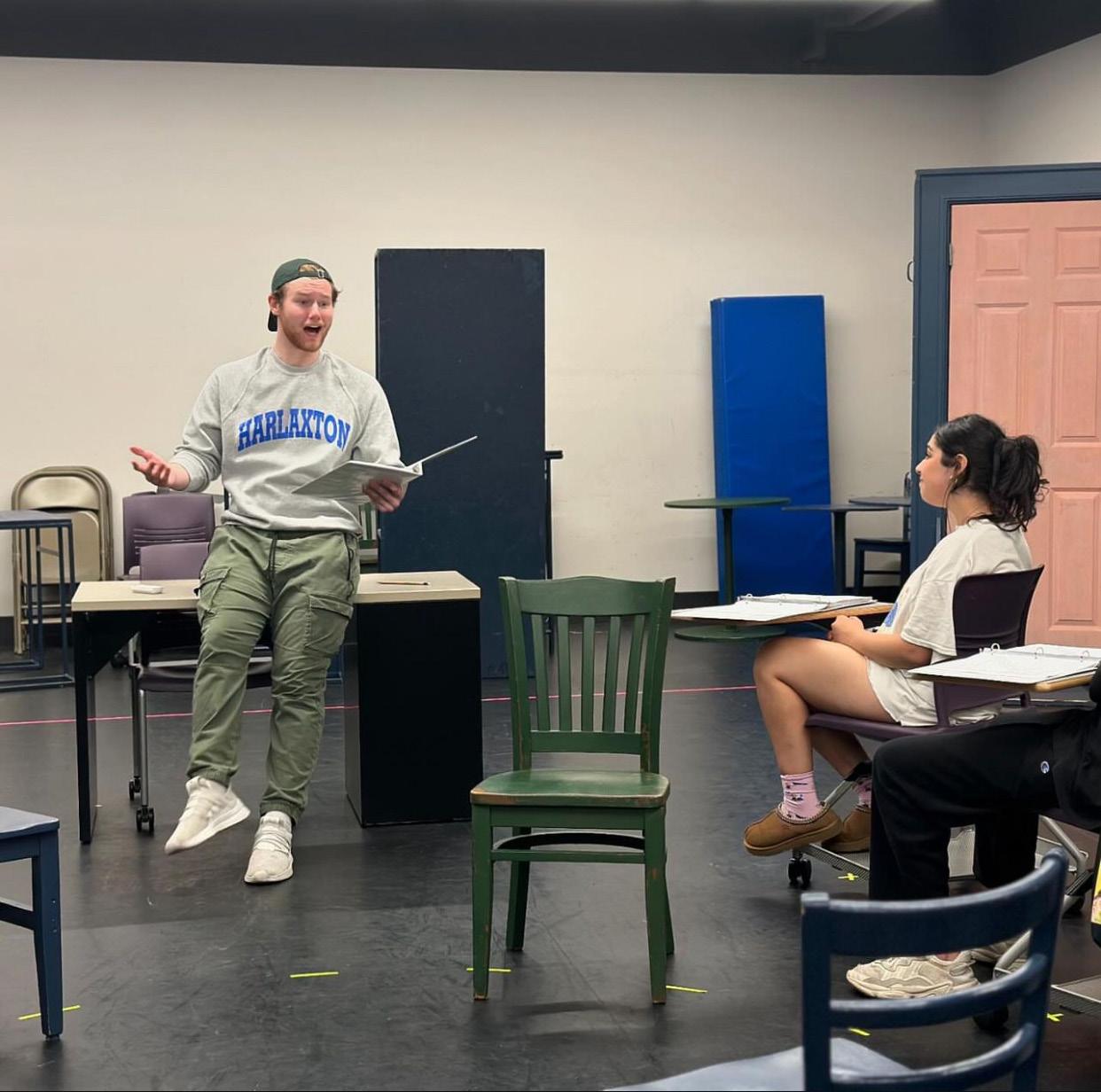
RehearsalPhotofrom@uetheatreInstagram
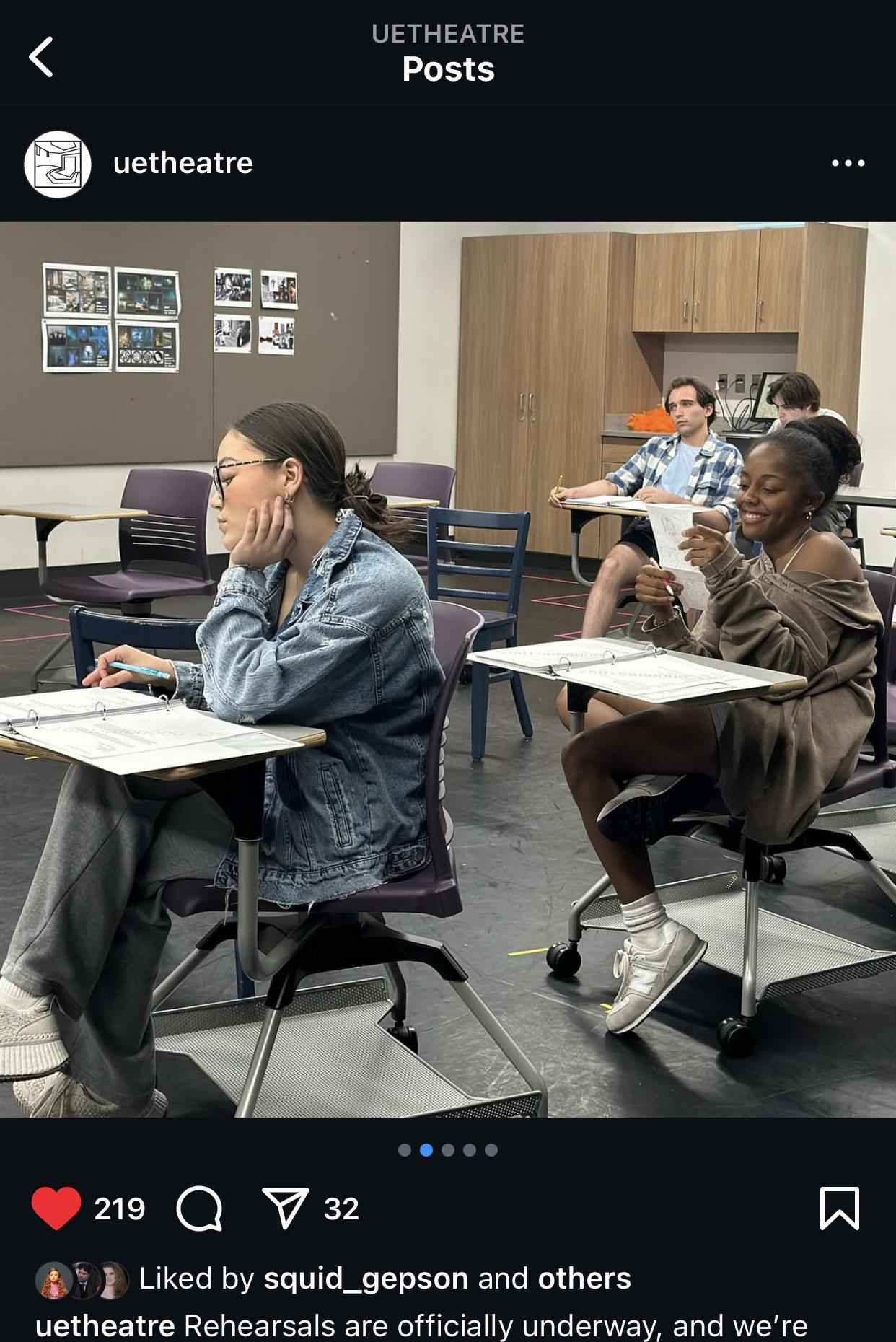
RehearsalPhotofrom@uetheatreInstagram
Two words aptly describe the UE Theater’s production of John Proctor is the Villain: provoking and passionate. Out of the five plays set to be on the University of Evansville’s stage this school year, John Proctor is the 2nd in the lineup. Written in 2017 by Kimberely Bellflower, this play follows a group of high school students discussing The Crucible, a play read by many students, and finding that the difficult themes presented in it apply to their own lives.
The Crucible is a play focusing on the tragic Salem Witch Trials and a farmer named John Proctor. The work contains depictions of unjust, patriarchal power and sexual control, both of which contribute to the predicaments of the students in John Proctor is the Villain. The UE theater program with director Evelyn Hipp, a senior Theater Studies major, chose this play for its combination of the past and present. With ties to both the classic Crucible and the high school experiences that many college students have gone through, this play will be sure to provoke discussion and promote change on campus.
Hipp, the director of John Proctor, was kind enough to sit down for an interview about her school career and her debut play. She is a passionate theater expert, and her responses were very reflective of that.
Why did you decide to be a theater major, and specifically at UE?
“I liked theater until COVID hit and then I couldn’t do it anymore, and that’s when I realized how much I missed it. I always found joy in it and it’s always been a safe space for me as an individual to express myself. Not being ashamed of what I make and what I want to do, and I’m happy; I’d be happy doing it the rest of my life… I really fell in love with the community and how tight it is. You really make some great connections in the theater world. We have a lot of guest artists come in, and our faculty are really accomplished individuals who have made a great career for themselves. The students here also really care about their work and they’re all vigorous.
They’re always in shops or in rehearsals and they’re always working. We also have a pretty good job placement rate out of school which is something that really interested me because it’s hard to find a job in theater.”
What was the initial process of directing and receiving this position?
“Usually we [UE Theater] select two students to direct a show in the May studio theater and that’s usually somebody who has a theater studies or a directing emphasis. When I applied, I initially pitched a musical to direct, I was just like, I’m just gonna go for the craziest thing I can pitch and then they’ll tell me to take it down a notch if they need me to. Once I was selected, my process was over the summer before I started directing. My professor kept sending me material and I also kept looking at material everywhere. My faculty advisor Wes sent me John Proctor the Villain and I followed up on the script and I said this is the one.
What makes this play applicable to this generation of students?
“What I really like about John Proctor is the Villain is that it turns what I have been taught…that John Proctor is this wonderful, transcendent, amazing person, one of the most amazing men, even though the way I always viewed it as a kid was that he drove some girl to madness. It was just a perspective that I had never seen explored. This play does a great job of addressing how we, especially women, think in a patriarchal world and the power that men hold in our society. It has a lot of really great themes about the issues of sexual abuse and power dynamics and our reactions to it. I also like the language. The writer, Bellflower, is really brilliant. She breaks up the text, and it’s almost like reading Shakespeare, but if it were spoken by really awkward teenagers…It’s my hope that people will come into the play and immediately connect to the universal American high school experience of what it’s like being a teenager. The play also takes place during the Me-Too movement, and I hope that people will take some of the core values from that movement in time and hold it with them as they see this play.”
What’s your pitch, why should people come see your play?
“If you have ever heard of The Crucible, have ever been interested in different perspectives on the play, or if you had an awkward experience in high school, you will absolutely relate to John Proctor is the Villain. Additionally, if you’re somebody who really cares about the rights and power of women, and the struggles of living in a patriarchal society, if that’s something you are really passionate about, I definitely encourage you to see this play…It does a great job of acknowledging our reactions to issues of sexism and sexual abuse.”
What do you hope to pursue after UE?
” I love to design, I love to direct, and I love to teach so really if I’m creatively fulfilled and creating something worthwhile, and being able to live off of the money that I make, then I’ll be happy. I’m really just letting Jesus take the wheel. I know that I came here fully expecting to know what I want to do, and I kind of still don’t, but I feel like that’s the beauty of art; you never really know, it just comes to you.”
With a dramatic blend of old prose and modern issues, John Proctor will be a spectacle worth witnessing and one that will promote healthy debate around the topics of the Me-too movement. With a new resurgence of the play, starring Stranger Things star Sadie Sink, announced for Broadway in 2025, this play is a modern classic that is as important in 2018 as it is now.
John Proctor is the Villain and will run from November 21st to the 24th in May Studio. To find more information visit the UE Theatre website.
Ambition, Alison Gansman has plenty of it. Coming into her Junior year of college, she heads up the Student Activities Board as President and has plans to make it THE Student Organization. Before we get into Bond villain schemes for campus domination, you have to know the whole story. My interview with Alison took place on a late October night. I had planned on interviewing someone else for the magazine, but it fell through, and I needed a worthwhile replacement quickly. Alison instantly agreed and cleared her schedule with my minimal begging. Sitting down with Alison, you are struck by how good she is at answering questions. There is always a well-thought-out response, and you hardly notice her struggling to think. With that observation, it was no shock to discover during our interview that Alison was a competitor in Miss Indiana. To reach that position, she had won the title of Miss Northwest Territory. During these competitions, she prepared and gave monologues as her talent. These monologues covered topics like Education and Mentoring. Alison let me know that at one point she had done speed painting but decided that wasn’t her talent. She refused to share pictures of said paintings, so I assume it truly isn’t her talent.

“So, is it like Miss Congeniality?” I asked with scholarly intent. Alison replied with a look that made it seem she was asked that a lot.
“No, it is not like Miss Congeniality”.
I quickly glanced back at my interview questions to avoid the awkwardness.
“So... you went to Harlaxton this past semester right?”
This question seemed to mask my poor taste in the last and she launched into the topic. Alison had attended Harlaxton in the Spring of 2024. She told me that it changed her perspective on what she values. The experience taught her to live in the moment and to not wait for the right time to travel.
I had met Alison for the first time in Harlaxton after I joined SAB. She talked my ear off about how the old exec board used to have board game nights.
“Oh, so do they have hot coco and wear plaid PJs as well?”
“NO! SAB is a very serious organization” Alison said while typing on her pink MacBook with a Care Bear sticker stuck on the back.
This lead back to her explaining plans for campus domination with SAB as her tool. SAB is responsible for “Winter on Walnut” and “Purple Palooza” while holding monthly events. Alison gained her nefarious ideas from attending NACA her freshman year which is a national convocation for Campus Activities. She said that it taught her different events that can help pull together students. UE doesn’t have the same budget for SAB as other schools which has created added difficulty, but the convocation helped her expand the organization. Alison wants SAB to be an inclusive organization with programming for everyone. Her vision for the organization is serving the student body.
“Eventually it will take off and people will see the hard work we’re putting in and want to be apart of it.”
Continuing down the long list, Alison told me about her involvement in Admissions Ambassadors. She feels giving tours reminds her of why she chose UE in the first place and continues to attend here. I asked why she would choose UE as a perspective student and her response was that it was a school

where Professors cared about you and your voice could be heard. She admitted that sometimes she wished she had a big school experience, but UE’s positives outweighed that feeling.
Ending out our interview, it became clear that Alison would be the poster child for a small school student. Without saying it, you could see that she was making the most out of her college experience. On a small campus it’s easy to assume that you know the majority of students, but there are so many people to meet and listen to.
“It’s not always about making the goal, but rather seeing how much you can grow as a person.”
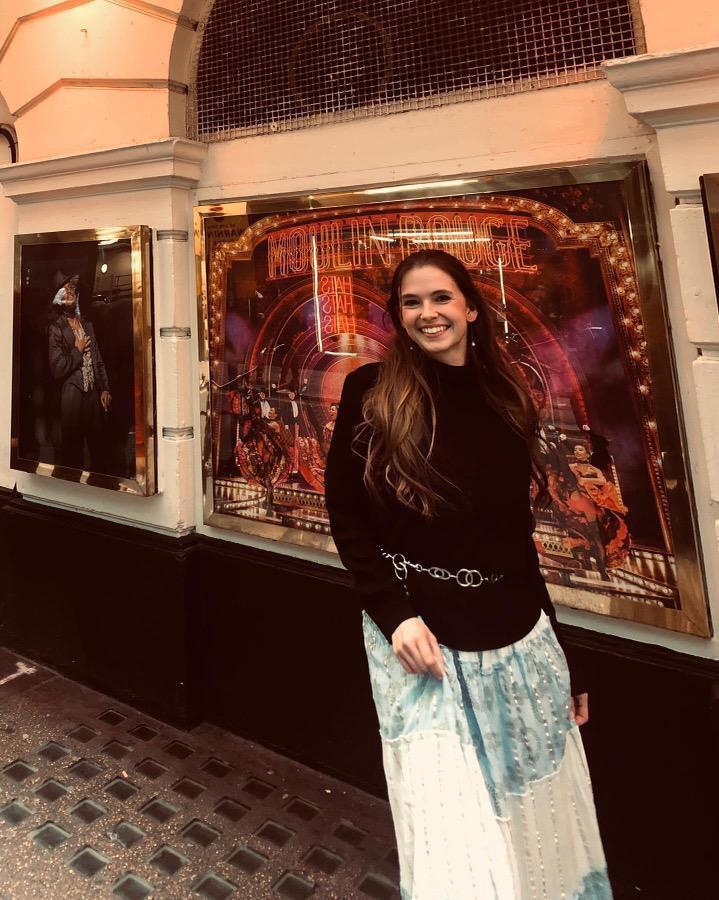
It's easy to feel alone in a crowded room.
But sitting among the 4x6’ paintings hanging on the walls of the Melvin Peterson Gallery, I felt no such loneliness even while being alone. I feel the presence of many women standing, smiling, and existing in the same space as me.
The artistic genius behind this exhibition? Sandra Charles.
I had the honor of speaking with Charles about her and her artwork. Below are a few excerpts of my interview with her.
How did you get this idea, like, when did you decide to focus on Black women as your main subject and why?
“When I was in high school and I started noticing, because I always like doing the figure, I started noticing that a lot of the old portraits, one, they featured men and all be white men and the ones with the women in them, they were always posing funny. And some, I think it’s like the 1700s, where the man would be really big and then the women small. Yeah. And to top it off, I think it was in 2004, we went, took a trip to DC. And my husband, who’s an attorney, loves the Supreme Court. We go in there and those are huge portraits of all the, you know, history of the justices, and it was very annoying to see there was nobody there like me.
“And, when I was growing up, the people who really ran the neighborhood were the women. I grew up in an era where a lot of the women were housewives. They’re also the ones that ran the church, you know, they were always on some committee and so they were the authority figures in my life. So I wanted to show this.”
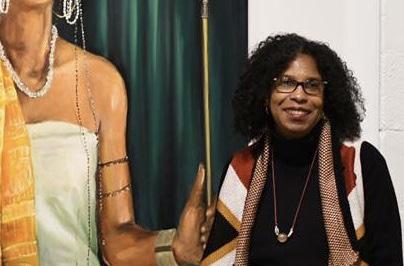
In each of your paintings, you show the entire figure, too. Why is that?
“It’s all about the figure and showing them how they really are. So that’s how I came to putting the figure from the top of the canvas to the bottom of the canvas. It’s kind of like the canvas, actually, is a frame. It’s how you’d look at something on a screen. It frames the figure. And so I acknowledge it there in a canvas. But I want them to explode, you know, and engage the viewer, like, in a bold way.”
What would you say is the overarching goal of your artwork?
“It’s that these are average women. They’re everyday women. And it’s their stories. The theme behind my paintings is the African American experience and especially black women. It’s our experience. And it’s not only about how we’re presented in society, but it’s also how we think of ourselves. You know, it’s kind of like all the paintings are personal to me, like a personal
statement. They are saying, here I am. The figure is showing them, like on the surface, but the background, especially in the later paintings, is actually about their personality and about what they’ve been through.”
Subtly yet with power, Charles creates strong portrayals of Black women existing in the real world, yet not in a traditionally “powerful” way. They do not show off muscles, they are not acting masculine, nor are they rising above all adversity. They are simply being, living the lives they’ve led for as long as they can remember, and assuring their place in the world just by doing that. All we must do is see and know her, and she becomes significant and powerful all on her own without doing anything particularly “special”.
You can see Sandra Charles’ show and learn more about her in the Melvin Peterson Gallery on the corner of Lincoln and Weinbach on weekday & Saturday afternoons until December 7th, 2024.

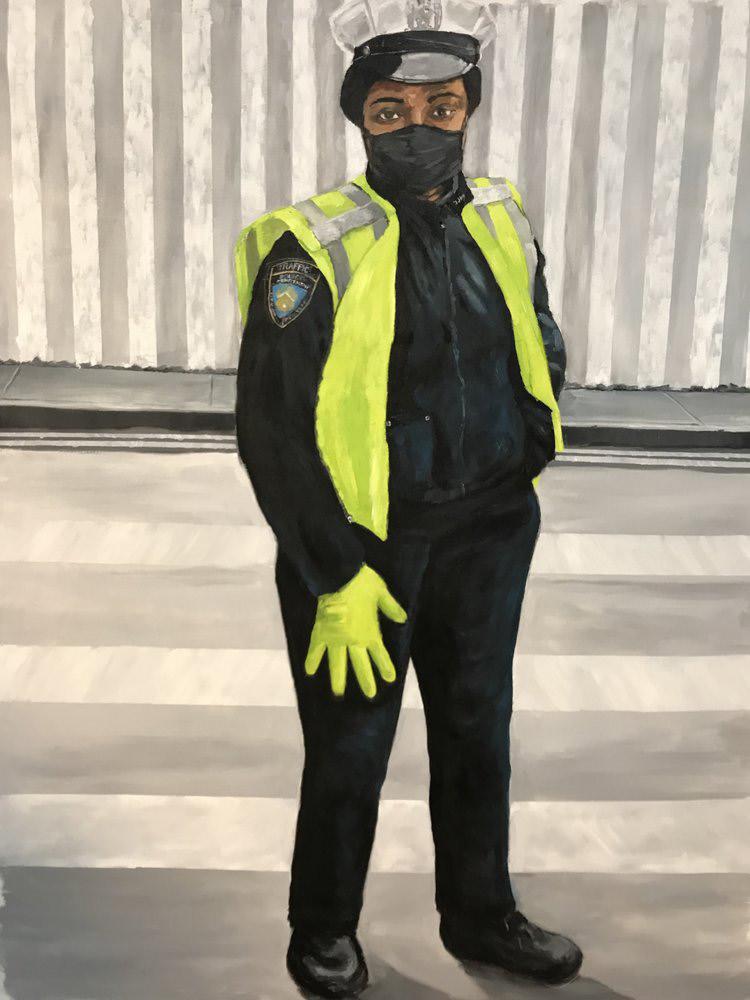



Grace Burnell
he Southern United States is often depicted as a sunny paradise that attracts an influx of tourist in the summer months. Who wouldn’t want to get away and breathe in that salty air? However, the summer also holds the dangerous threat of severe weather in the shape of hurricane season, which lasts from June through November. Each year, citizens brace themselves for whatever may be thrown at them, but this year, the intensity of the storms took everyone by surprise. Meteorologists have been tracking the increasing severity of extreme weather for years, and it has only
grown more threatening with the rise of climate change. “Tornado Alley,” or the areas in the US most subject to tornadoes, is slowly moving eastward into the Midwest. Fires rage in northern California and Colorado, forcing evacuations. Floods are washing away infrastructure and whole towns. People’s lives are being threatened, which makes now a crucial time to understand why the climate is changing and what we can do to prevent further disasters.
Hurricane Helene and Milton slammed into Florida in back-to-back highcategory storms. Currently, it is
estimated that around 300 people died. Helene landed as a Category 4 storm late on September 26th in north Florida and became one of the deadliest storms to hit the US in the past 50 years. The storms swiftly spread north into the Appalachians with unprecedented flooding and strong winds. North Carolina was also struck hard, with over 300,000 without power and some without a home. Cities like Asheville and Chimney Rock faced near destruction from record-breaking rainfall and flooding. To make matters worse, Milton hit the coast on October 9th as a Category 3 storm. Milton weakened

soon after but continued the devastating effects of Helene with widespread tornadoes. Ahead of the second storm, Florida declared a state of emergency, urging citizens to evacuate.
The question many people are asking is why the weather has become this bad. The consensus of scientists is climate change. Earthjustice, a nonprofit organization focused on environmental law, explains in their article “How Climate Change Is Fueling Extreme Weather” that human activity strongly contributes to climate change. We burn fossil fuels that release massive amounts of carbon dioxide into the atmosphere daily, spiking global temperatures. This increase has led to intense hurricanes, destructive wildfires, droughts, rising sea levels, and recordbreaking snowfall. The United Nations’ Intergovernmental Panel on Climate Change (IPCC)’s sixth climate report says that humans have “warmed the planet by 1.1°C since pre-industrial times” and that if the temperature rises above 1.5°C, these climate disasters will only worsen. The IPCC claims we need to reduce emissions “by 43% by 2030 to limit warming to 1.5°C.” NASA agrees with these assertions, arguing that climate change may affect our production of corn and wheat by 2030. Because of the temperature increase,
rainfall shifts, and elevated surface carbon dioxide, corn crop yield could decline by 24%, while wheat could grow by 17%. These statistics could severely impact production levels and food consumption in the coming years.
Big corporations are often cited as the number one cause of climate change, which is still true. They use more power and produce more emissions through manufacturing than anyone could imagine. But, with the development of artificial intelligence, it is more important than ever for individuals to be aware of their carbon footprint. According to the International Energy Agency, one request made through ChatGPT (2.9 Wh per request) requires ten times the electricity of a Google Search (0.3 Wh of electricity). Creating images requires even more energy than that. The microchips that power AI also require rare materials, often gathered in environmentally destructive ways, and the data centers consume tons of water daily. It is nearly impossible to avoid AI, as it is integrated into search engines, phones, and editing software. While some companies employing AI are attempting to decrease their need for energy, people must limit their use of unnecessary AI so as not to strain our already limited resources. It is also vital to demand regulations for measuring
the environmental impact of AI and making their programming more efficient, as it is now a part of our daily lives.
Along with being conscious of our AI usage, we can do everyday things to reduce our carbon footprint and help people impacted by extreme weather. Society must hold big corporations accountable for their destructive actions against the Earth, reduce our reliance on fossil fuels, such as coal, oil, and natural gases, and switch to clean energy, like solar and wind. In our daily lives, we can use less energy by turning lights off when not using them. We can walk or take public transportation instead of driving everywhere. It is also important to realize how crucial nature is in the fight against climate change. The Earth’s soils, oceans, animals, and plants have absorbed 54% of human greenhouse gases during the past ten years.
A way to make real change and impact policy is by speaking up and letting our representatives know we care about the planet so we do not constantly worry about entire towns being wiped out by extreme weather. We also need to provide help to people who have already been hurt. The Red Cross has opened donations and volunteer opportunities to help Hurricanes Helene and Milton survivors.
Local Red Cross volunteers from Evansville are stationed in places like Florida and Georgia, assisting citizens to find shelter, meals, and healthcare, whether physical or mental. We must also be mindful of information shared online, as misinformation about FEMA’s aid to survivors rebuilding efforts is being spread.
All these statistics might make us feel helpless, but as individual citizens, we must do what we can to limit our impact on the environment and not be swallowed by negativity. Extreme weather is scary and will only worsen if we don’t work together and make a change. Educating ourselves and each other is the first step in helping prevent the climate crisis, even if we cannot feel the immediate effects.
Be a voice for the Earth because it cannot speak up for itself.

A Discussion About the Hit CBS Comedy Ghosts is hosted by Andrea Lenser. This podcast will be diving into the world of the TV show Ghosts on CBS and will explore the plot lines, characters, relationships, and everything that makes Ghosts special.

My name is Julian and welcome to the Couch a podcast. We’re just gonna talk sports just like you would with your homies. Since this podcast is gonna be during the fall and winter, we are mostly gonna be talking about football and maybe basketball.

Hey, freshies, feeling a little lost, overwhelmed or just plain confused. We’ve been there. I’m your host, Abijah Mersyl Dalion and welcome to Dear Freshman. Your go to podcast for Surviving and thriving in your first year of college.

What’s up guys welcome to the download I’m your host Lucas and I’m your host Mike. This semester we’re going to be talking about music and what’s going on around the world and we’re also going to be treating sports like his first take on ESPN and whatever topic comes to mind that day.
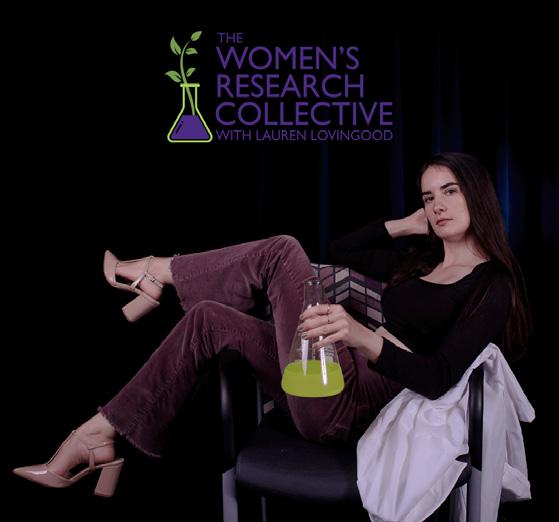
Welcome to the Women’s Research Collective. I’m your host, Lauren Lovingood. On this podcast, we explore the diverse experiences of women in the world of research. Each week we feature a new guest, ranging from accomplished professionals in academia to undergraduates gaining their first experiences in research.
CAN FIND ANY OF

What is going on y’all?
This is Elijah and you will be listening to my podcast called Relationships. Just know if you’re going through hardships, tough time, rough patches, you know, we all go through it.

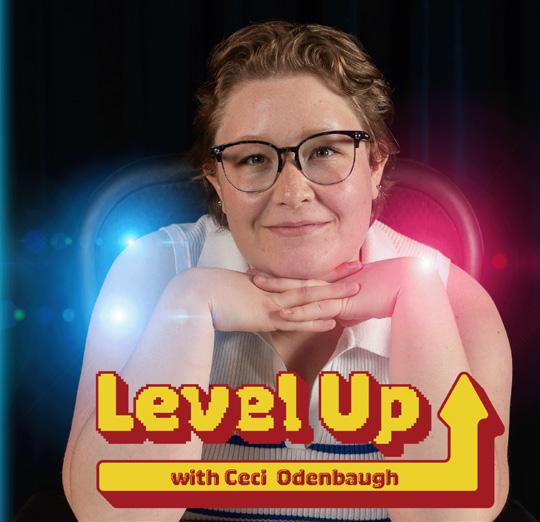
Welcome to Level up your ultimate podcast for all things gaming. We’re breaking down the newest releases, revisiting classics and taking you behind the scenes of the gaming world from e-sports to R P G s and everything in between.


Bienvenidos a Celebrating Hispanic Voices, un podcast donde hablamos sobre las experiencias de Latin@s/ Hispan@s aquí en USA. Este podcast es billingue, donde en algunos episodios estaran en español o en inglés o en ambos. Welcome to Celebrating Hispanic Voices, a podcast where we talk about the experiences of Latin@s/ Hispan@s here in the USA. This podcast is bilingual, where some episodes will be in Spanish or English or both.
By: Ale
Hi, guys, I’m Chance McDowell and I’m Autumn Mosley. We are both freshmen here at the University of Evansville. Our podcast unscripted where we talk about whatever we want. So, if you like pop culture, current events, drama and other topics like that, be sure to tune in each week for something new.
The University of Evansville Student Media team is now producing The Crescent Sports Report, a weekly podcast dedicated to bringing the Evansville community the latest and greatest in sports news and entertainment. The podcast features the Eli Hamilton and Lui Tirado.
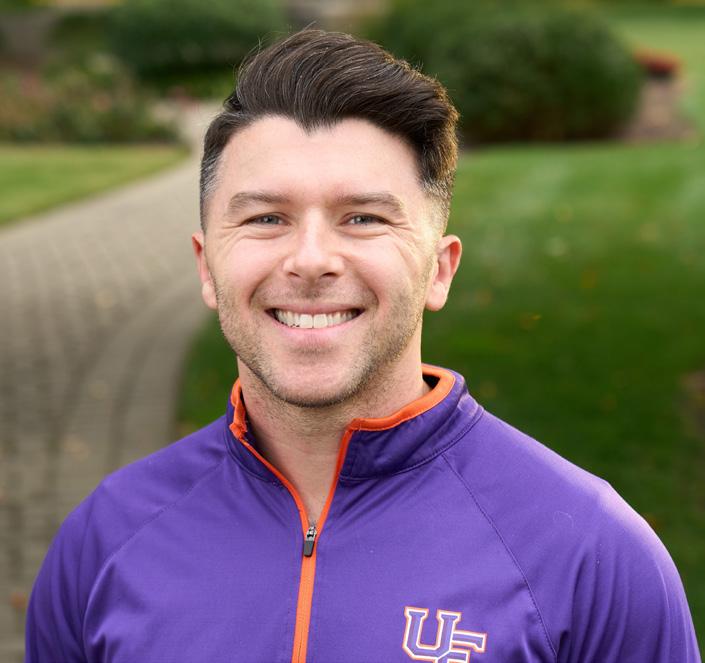


Here at the University of Evansville, we are blessed to have many talented faculty who are dedicated to both teaching and research. Our faculty profoundly impact not only the students they teach here at UE but also the many communities touched by their research.
In October I had the pleasure of sitting down with Dr. William Miller from the School of Health Sciences to talk about a new research study that will connect UE’s exercise and sport science students and faculty with doctors, professors, and patients across the Evansville area and positively impact the health of our community. The conversation reminded me instantly of the University of Evansville’s new motto, “Changing Lives, Changing the World.” Here is a glimpse into how doctors are changing lives right here in Evansville and empowering UE’s exercise and sport science students to do the same. Dr. Miller is only in his third year as a professor at the University of Evansville
but is already well-connected with the local health sciences community. He and a team of doctors and professors will be bringing change to underserved patients in the Evansville area through their project “Building Bridges: A Community-University Partnership for a Home-Based Resistance-Band Exercise Study in Prediabetics from Underserved Communities.” The goal of the program is to help those at risk for diabetes by implementing an exercise program to lower their blood sugar and body fat and increase their muscle mass. At the same time, participants will learn about the importance of physical activity and form healthy habits during the threemonth exercise program.
Diabetes and community-based programs are both new research directions for Dr. Miller, but collaborating with other local professionals is allowing him to use his exercise physiology expertise to help those who are already working with prediabetic communities in need of care. Dr. Miller stressed the importance of networking, explaining that research opportunities can come down to who you know, but the only way to get to know people is to be proactive and get outside your comfort zone. This is especially true early in a career, and it’s never too soon to start!
1. Don’t be afraid to step outside your comfort zone and put yourself out there.
2. Take advantage of the small departments and class sizes at UE to ask questions and talk with your advisor and professors.
3. Pursue a wide variety of interests and experiences that will make you well-rounded. You never know what will interest you or what you’ll find helpful in your career!
Dr. Miller came across this research opportunity while talking with one of his colleagues right here at the University of Evansville, showing how the personal connections forged within departments at small colleges like UE can pay off. Since then, a team of professors and doctors from three universities and two medical facilities has joined forces to shape the research study. After many meetings spent planning, the project is now ready to launch a mock trial in the spring 2025 semester before beginning to accept patients from Evansville shortly thereafter. Different team members will handle different aspects of the project from physical exams and facilities to scheduling and recruitment to the student help with leading the exercise sessions.
A local network of doctors is making this project possible.
Dr. William Miller, Ph.D. - Assistant Professor in the School of Health Sciences, University of Evansville
Dr. Cody Strom, Ph.D. - Assistant Professor of Kinesiology and Sport, University of Southern Indiana
Dr. Pearl Quartey-Kumapley, M.D. - Medical Director, Deaconess Clinic Memorial Dr. David Lippman, M.D. - Medical Director, Evansville Community Healthcare Center
Dr. Kara Garcia, Ph.D. - Assistant Professor of Radiology and Imaging Sciences, Indiana University
Dr. Josh Wildeman - Strength and Conditioning Coach, University of Southern Indiana
David Goodrich - Director, Deaconess Research Institute at Deaconess Health System
As I mentioned, Dr. Miller and the rest of the research team have put an incredible amount of planning into setting this program up for success. It is difficult to fully account for every problem or logistical detail that will arise in a project like this one, but their goal is to anticipate as many as possible to streamline the research process. Local doctors who are already working with underserved patients have used their first-hand experience to help identify and plan for potential challenges such as by providing Uber gift cards to accommodate patients’ lack of transportation to and from clinics. The goal is to make it as easy as possible for a wide variety of people to participate and include individuals previously excluded from health care.
In addition to planning, it also takes a lot of funding to make programs like these possible. Finding adequate funding is perhaps a universal struggle within academic research, and yet grantwriting is not a skill typically taught in classes. Therefore, I was interested to hear Dr. Miller’s thoughts and experiences in this area of his research planning. Dr. Miller learned to write grants while looking for funding during his master’s program and has been applying for them ever since. Through his efforts, the Building Bridges research program received a $25,000 Trailblazer Grant through Indiana’s Clinical and Translational Sciences Institute (CTSI), which makes grants available specifically for projects forming new
community partnerships. These grants generally go to much larger schools like Indiana University and Purdue, which speaks well of the quality of research being done by Dr. Miller and his team.
1. Do research into the organization you’re applying to and follow the instructions or template they give you.
2. Explain your project in a way that those evaluating your proposal can understand it and grasp its importance even if they aren’t experts in your field.
3. Break time-consuming or overwhelming applications into bite-sized chunks and start far in advance of the deadline.
4. Don’t be afraid to ask businesses or organizations if they give discounts to students or people using their products or services for research purposes.
5. Be prepared to write an accurate budget and justify your costs. When doing so, remember to leave funding for unforeseen complications and costs.
6. Seek advice from people who have been successful grant writers and remember it’s ok to ask for help.
7. Don’t be afraid to fail and always learn from the feedback you receive on your applications.
Besides funding, another challenge in research is the sheer amount of time involved. Large-scale research studies like this one take time to plan, execute, and document and are usually not a part of a professor’s “real job” (i.e., teaching students). Dr. Miller’s story of balancing time spent teaching, researching, and fulfilling other commitments was reminiscent of college students’ busy schedules and reminded me that time management will always be a crucial skill.
Once the program is running, doctors and student assistants will take at least 50 volunteers through a three-month course of exercise classes with the goal of heading off diabetes by replacing sedentary lifestyles with healthy exercise
habits. Using simple equipment like resistance bands and virtual classes available on the patients’ cell phones, the team hopes to overcome barriers to health care to provide education about the importance of a healthy lifestyle and increase the patients’ sense of self-efficacy. These lessons have the potential to yield life-long benefits for patients well beyond their time spent in this program.
In addition to helping lessen the massive health disparity in Vanderburgh County, this project will also benefit students at UE by giving them valuable experience with research and practice in teaching, motivating, and guiding patients during the health program. Students will lead the virtual exercise sessions in the program next spring and summer and help present the study’s results after the first round of patients finish the three-month program by the fall of 2025. From there, the research team hopes to use the data they collect in the first phase to build their case for future grants to expand the scope and geographic area of the project.
Dr. Miller’s research project provides a fantastic example of the ways that students can get involved in tackling realworld problems here at the University of Evansville. Dr. Miller encouraged all students to get involved in research if they are interested, no matter what their department. From taking advantage of opportunities for research papers or projects within coursework to working with professors on their own projects, students at UE have the chance to take learning into their own hands. Throughout the interview, Dr. Miller often reiterated that “You get out what you put in.” As students, we can start having amazing academic experiences right now if we are not afraid to seek out and create opportunities.
Stay tuned for future faculty research spotlights in upcoming issues of Crescent Magazine!
Are you a faculty member interested in being featured?
Contact Grace Gleisner at gg126@evansville.edu.
Madison Adams:
Madison Adams
Contributiions from Harlaxton Students
Many people have ventured to Harlaxton but we know not much of their travels. How are we to decide on our fates if we do not not know what we are signing up for? Stress no more, as in this edition we’ll learn of your fellow classmates adventures to help determine your future endevours if you’ll make the leap to Europe in another semester.


I came to Harlaxton because I wanted to get away from what I had in the US and re-establish myself in the UK. Being able to live in a manor and explore the UK is a great opportunity and a much cheaper way to enjoy life with others. My favorite trip while being here had too have been the North Wales Weekend Trip with the train up the mountain, although Peterborough was a close second purely for the Seafood! I would highly recommend going abroad as the nature, architecture, food, and simply the peace and quiet are worth it in my book!
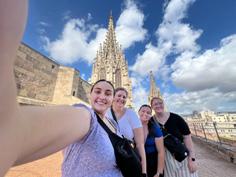

I decided to go to Harlaxton for a semester abroad so that I could travel across the UK and Europe while continuing my nursing education. Continuing my nursing education at Harlaxton has allowed me to learn about and see firsthand the Universal Healthcare System as well as other European systems. This opportunity will undoubtedly impact my future nursing practice by allowing me to see so many different versions of healthcare systems. I have also had the opportunity this semester to visit multiple countries and see so many different cultures in such a short timeframe. My favorite trip that I have taken so far was to Geneva, Switzerland where I was able to see many museums, historic sites, and the United Nations.
Jacob Bettag:
This semester I’ve been able to travel all over Europe. My first trip I went to the capital of Iceland where I was able to see some of the most bizarre yet beautiful places on Earth. I then took a trip to Copenhagen Denmark where we saw some beautiful architecture and saw the Parliament building and kings house. Most recently we went to Cologne Germany where we got to see the cathedral there which was absolutely breathtaking. I have many more trips to come and I’m extremely excited.
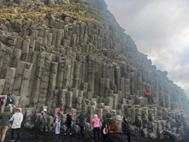
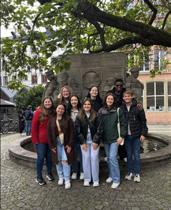
While at Harlaxton, I get to travel the world with friends and get to see the amazing sites that England has to offer. Whether that is here at the manor or just a train ride away. I’ve been to Barcelona, Cologne, Geneva, and soon Milan! I will always be appreciative of this chance and the experiences I have gained. I hope I can take these opportunities to be a better person and future nurse!




Tabitha Kirtley:
When thinking of study abroad opportunities, Western Kentucky University had plenty to offer. Although I had many options, I chose Harlaxton because it was impossible to give up the opportunity. The manor life and the travel opportunities are what drew me in, and I am pleased to say that so far in my time at Harlaxton, I have had plenty of travel to brag about when I get home. As for my time living in the manor, it has been good (although it is freezing here in the fall and they won’t turn the heat on until the end of October!). Although I haven’t left the country of England since being here, I have trips to Scotland, Ireland, France, and Belgium all planned.
Out of my travels throughout England, my favorites have been Nottingham and London. In Nottingham I went to a cat cafe with friends and then we went to the park by the Nottingham Castle that had a beautiful view of the city and fun bridges! London is known for having a lot of things to do due to its size and diversity and I had a blast. The British Museum is massive and has so much to look at, Chinatown is fun and has great food, and there is a place that my friend and I like to call “the cube” aka the Outernet, that is right by the Tottenham Court tube station that is filled with cool screens that artists send animations to.


I chose to go to Harlaxton to gain new experiences and make memories! It’s been extremely eye opening, to see how big the world actually is. Traveling to new places and living in the Manor are all things that I will cherish forever! I encourage everyone to come here.
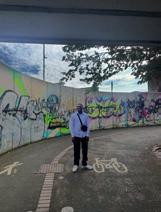

I chose Harlaxton because I wanted to explore Europe. It’s been a dream of mine to go out of the country, so Harlaxton was best and most affordable option for me. I’ve also been able to meet many new friends and hang out with my meet a family as well.


I like harlaxton because I love traveling. I’ve always wanted to study abroad since I was a kid. I’ve been to Denmark and Germany. It’s been very fun.


I chose to go to Harlaxton as a UE student so I could take the opportunity to travel and learn other cultures. While being here I have learned a lot about myself and how to adapt and overcome challenges! I am so thankful that I made the decision to come. The memories I am making here are priceless.


I came to Harlaxton so I could have the experience of learning in another country and being able to see how the universal Healthcare system operates because I am a nursing student. Some of my favorite things around the manor is to study in the conservatory, talk to my friends in the changemakers lounge, and go on walks around the village. Of the trips I’ve gone on so far, Giverny France has been my absolute favorite! I went to the Claude Monet house and got to see the beautiful French countryside as well.
Carter Heaston:


I chose Harlaxton because it is the most convenient study abroad available for students at the University, which makes it easy to have a once in a lifetime opportunity. So far, I have gone to London, Dublin, and Manchester, and would recommend trips to all these places. In the time I am here I am also going to Brussels, Paris, Berlin, and Reykjavik, and I am more than excited to take these trips. My main pieces of advice for students are to make sure that you are prepared to balance your schedule between school and travel. I would recommend that EVERY student goes on this adventure, as I am having the time of my life studying abroad.


I chose to come to Harlaxton because growing up I was always so interested in different places in Europe but grew up with a family that stayed within the states. So, Harlaxton was the perfect opportunity to see all the places I want to visit while in college and at the same price point as it would be at UE. Harlaxton being prematurely built into the nursing program was one of the main reasons that I ultimately attended UE. As a nursing student, we get multiple experiential learning opportunities for our clinicals that allow us to travel more along with expand our learning. So far, we have traveled to London, Rome, and Wales with a lot more places on our calendar. This opportunity has been the best choice I’ve made and has been beneficial to both my academic and personal life.
Tarakate Curl:


So far, my favorite trip during this semester abroad has been the school trip to North Wales. This trip was so enjoyable because of the beautiful scenery and calm atmosphere. Up to this point, we have mostly visited bigger and busier cities, so being able to travel to little towns across North Wales, like Conwy, Llandudno, and Caernarfon, was a nice change. Throughout the trip, we saw both beaches and mountains. We made stops at Swallow Falls and Zip World, and we saw sites like the UK’s smallest house and church.


My friends and I visited Rome for the weekend and had the most amazing time. We took a tour in the Vatican Museum and were able to enter the Sistine Chapel. The next day we explored the Roman Colosseum. Each day was accompanied with lots of pizza, pasta, and gelato! I would never change this experience for the world and can’t wait for the opportunity to go back!


I chose to go to Harlaxton for the wonderful traveling experiences I would be able to have. Learning about new cultures has always been something I enjoy, so this experience has been perfect for this opportunity. Harlaxton is a special place that allows you to learn more about the world around you and I have cherished every moment of that since I have arrived. This experience has taught me more about myself as well as how college life is like in the UK.


My experience at Harlaxton has been amazing so far. I’ve gotten to have so many different experiences. Every place I’ve explored has been new and exciting! All the trips that I’ve taken has made me feel more confident and independent. I’m made so many friends and loved every minute.
Maria Felato:

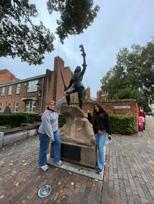
I came to harlaxton because the opportunity sounded like a dream. Being able to study history in england, in a castle, it was an opportunity I knew I couldn’t pass up. This also sounded like an opportunity that I would one day be able to share with my future students and hopefully encourage them not only to study abroad but to take the first steps and purse a higher education.
One of my favorite things ive done so far has been planning trips with friends. It may seem small but it is not everyday you can just say, “let’s go to Amsterdam this weekend?” And then actually go, it’s just fun to be able to have the opportunity to be able to do such fun things. So far I have been to France, the Netherlands, Scotland and I plan to go to Spain next!
Lila Durham:


I came to Harlaxton to get out of my comfort zone, and go on an epic adventure. As an art major I decided to come to the UK to get all of the reference photos a young artist could desire. From the Harlaxton grounds themselves to any of the historic cities or natural landscapes, there’s immense beauty to be found everywhere you look. I look forward to being able to bring my views of the UK to life in the way that only artists have the capability to do. An artist’s eyes are the lenses through which our world is seen, and our hands, with the mediums through which we decide to depict our work, are the printers that allow others to see the world as we do. England is such a magical place, and one of the greatest sources of inspiration I’ve ever had the fortune to lay my eyes upon. I’m glad I came.
While these are all of our personal experiences, the only way to truly understand to travel here is to be here. Fly over, see the cities, countries, and enjoy your independence.
It is now October 27 and we have come back from fall break, I chose to attend the schools plans which were in Ireland and Scotland. Personally, I loved Scotland and could have done with one less day in Dublin. We had three days in Belfast, three days in Dublin, and two days in Scotland. The architecture was one to see, truly outshines the States in all ways and adds to the classic aurora you seek abroad.
If I had it my way I would stay out the states and never look back as this scenery is one of the world’s few treasures. When looking at the places I’ve been to, a suburban area is best, yes London and Dublin are great but not when it comes to day-to-day life.
Other places students encourage to visit during break include:
- Prague - Italy
- France
- Greece
- Amsterdam
- Edinburgh
- Cruises
- Germany
- Egypt
- Austria
- Spain


Zorah Mehrzad
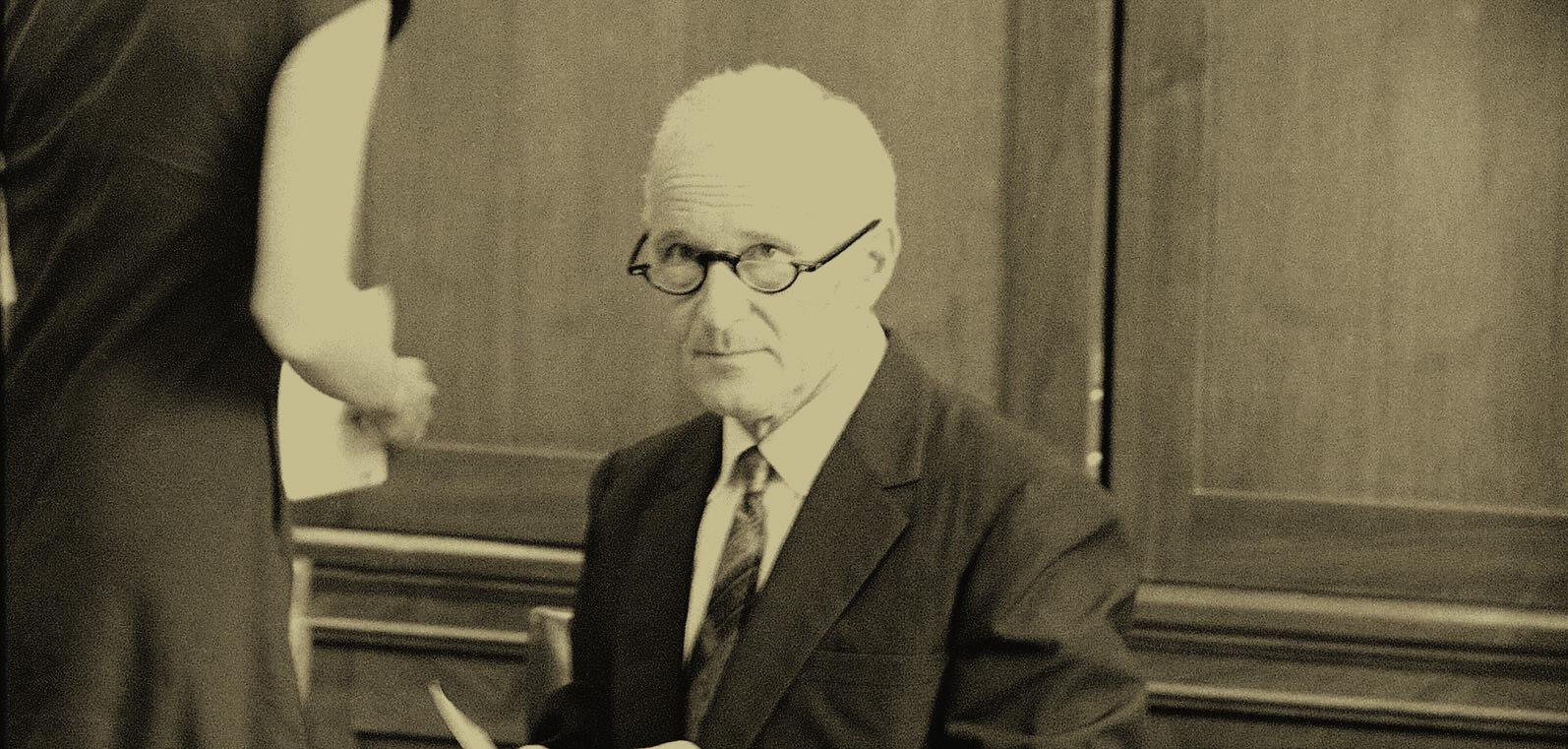
The Central Intelligence Agency (CIA) of the United States has a muddy reputation at best and an entirely heinous one if we’re truly being honest. They have been behind handfuls of coup d’états in Latin America and Africa alone, not limited to Haiti (2004), Congo (1961 and a failed attempt in 2024), Ecuador (1963), Brazil (1964), Chile (1964), and Bolivia (1964 and a failed attempt in 2024). Following the events of September 11th, 2001, they exponentially expanded their network of “black sites,” detention centers designed to torture suspected enemy combatants with little to no governmental oversight. The locations of these centers are generally unknown to the public and have been accused of repeated human rights violations over the past two decades they’ve been in operation. Not to mention, the infamous yet entirely underdiscussed Operation Paperclip, in which the CIA made repeated attempts to recruit Nazi scientists to work for American intelligence during the beginning of the Cold War with moderate success. All in all, it should not seem crazy to say that the CIA conducted a series of projects exploring potential mind control methods using LSD and other hallucinatory substances. Or that they tested these methods on unknowing civilians.
An agency memo from January of 1954 containing the question, “Can an individual of [redacted] descent be made to perform an act of attempted assassination involuntarily under the influence of ARTICHOKE?” was made viewable to the public after
the CIA published a number of not entirely unredacted reports in 1978. “ARTICHOKE” was a stand in for “‘special’ interrogation methods and techniques,” which included “drugs and chemicals, hypnosis, and ‘total isolation,’ [as a] form of psychological harassment,” as detailed in a CIA memorandum on the project, which can be found in the NSA archive of George Washington University. Formally called Project Bluebird in earlier reports, Project ARTICHOKE began somewhere around 1949 and ended around 1957, after which time Project MKUltra was the Agency’s main focus. According to the same CIA memorandum, the Agency logged “numerous (probably several hundred) experiments with hypnotism” during 1951, 1952, and 1953. They also recorded some instances of “narcohypnotism,” injecting mysterious “substances” into subjects during interrogation. No information could be found to understand why they began nor why they ended these experiments, and there was no reported operational usage for hypnotism in the field. While Project ARTICHOKE was assumed to have ended somewhere in the late 1950s, memos from 1954-1955 make mention of ARTICHOKE teams being dispatched to “an overseas area to handle a number of sensitive cases.”
The nature and scope of their work is currently unknown.
While much of the information surrounding Project ARTICHOKE is still classified, there is report from November of 1953 detailing one significant incident in which Frank
Olson, a CIA biochemist working at the Fort Detrick facility developing germ and chemical warfare, was administered LSD by an Agency member, which was quickly becoming the CIA’s drug of choice. The day following his administration, Olson was reportedly acting in “a peculiar and erratic manner,” leading him to be placed under psychiatric care. Within a week he had died by apparent suicide. His official cause of death at the time was falling out of the window of his thirteenth story apartment, however, after the CIA revealed in 1975 to his family that he had been given LSD, his son had the body exhumed. An autopsy revealed Olson had actually died from blunt force trauma to the head, therefore changing his official cause of death from “suicide” to “unknown.”
But Olson wasn’t the only civilian victim of the program. Dr. Sidney Gottlieb, fittingly nicknamed the “Poisoner in Chief,” headed both Project ARTICHOKE and its subsequent offshoots, Project MKUltra and Operation Midnight Climax. According to an interview with historian Stephen Kinzer in the Los Angeles Review of Books about his book on the matter (Poisoner in Chief: Sidney Gottlieb and the CIA’s Search for Mind Control), Gottlieb’s obsession with LSD began when he became convinced that the Soviet Union was stockpiling the substance for their own mind control experiments. Being that Gottlieb’s involvement with the CIA was in the early days of the Cold War, this suspicion was enough to convince the US government to buy up massive supplies of LSD from Switzerland, where the drug had first been synthesized. The primary goal of the Agency was to develop a drug that could at least work as a truth serum, while Gottlieb strove to understand how to conduct total mind control of an unwitting victim. Numerous CIA memorandums detailed that Gottlieb was prone to dosing his own colleagues with LSD, only telling them hours after the fact. During the course of Project MKUltra, Gottlieb’s habit of testing substances on non-consenting individuals ran out of control, fully at the behest of the US government and intelligence agencies.
His first source of subjects in the early 1950s was the Addiction Research Center in Lexington, Kentucky. Described as functioning “more like a prison” than a hospital for people with substance use disorders, the Addiction Research Center was also under the authority of both the Bureau of Prisons and the Public Health Service, making it easily accessible to Gottlieb. Its director of research, Harris Isbell, got into contact with Gottlieb and subsequently offered up his population of patients, many of whom were both poor and Black. When the research wasn’t to Gottlieb’s satisfaction, he moved on to working with Ewen Cameron, president of the American Psychological Association and Canadian Psychiatric Association. Cameron was funded and protected by the CIA while he performed his own experiments on patients seeking treatment, placing them in small cells where he would “put them in a druginduced coma, and [subject] them to endless repetition of recorded phrases,” as according to the Jacobin.
Operation Midnight Climax finally came into being during the mid 1950s. Working closely with agents in San Francisco, Gottlieb began setting up a series of “safe houses” in which to conduct his ongoing experiments. He enlisted the help of George Hunter White, Federal Bureau of Narcotics agent, to assemble what Kinzer described as “a group of prostitutes whose job it would be to bring their clients to the ‘pad’ and dose them with LSD while he watched and recorded their reactions.” A six-bedroom duplex covered in mirrors and prints from the French artist, Henri de ToulouseLautrec, served as their main base of operations, with each mirror actually being a two-way mirrored window through which CIA agents could observe the effects of large LSD doses paired with sex. Investigative journalist Tom O’Neill labeled the whole enterprise a “psychedelic honeypot experiment,” and over the course of its decade-long run, the CIA built out three total “safe houses” in San Francisco, as well as another in Greenwich Village, New York City. The total number of victims remains unknown, and no substantial findings
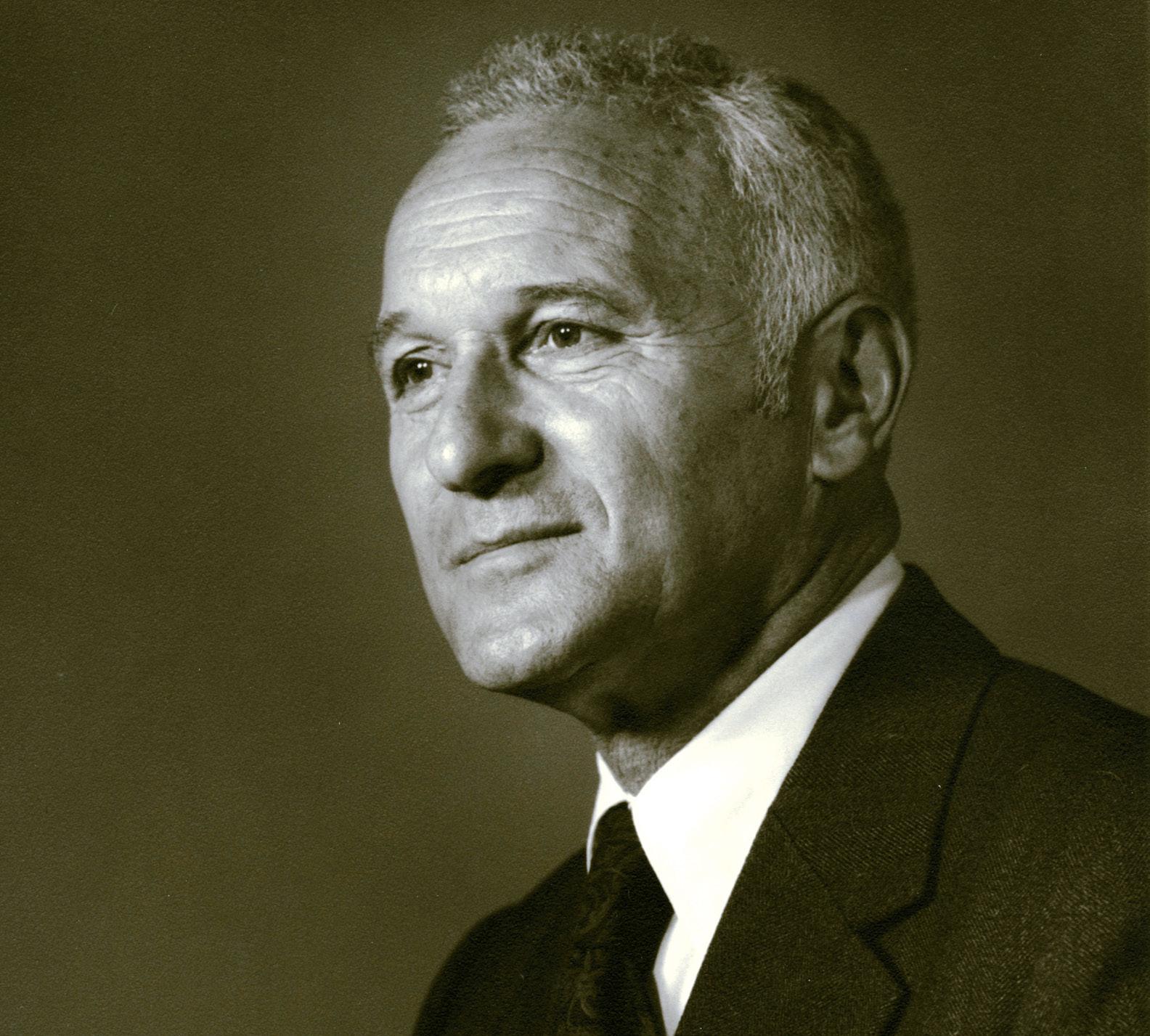
Pictured: Dr. Sidney Gottlieb
were ever reported, much to the disappointment of Gottlieb. Years after the “safe houses” were shut down, a letter from White to Gottlieb revealed that White had participated in the project for no other reason than his own enjoyment, saying “Where else could a red-blooded American boy lie, kill, cheat, steal, rape and pillage with the sanction and blessing of the All-Highest?”
However, none of the information discussed above would have ever seen the light of day without the Freedom of Information Act (FOIA), first proposed by Congressman John Moss in 1955. The FOIA entitles anyone, civilian or otherwise, to request information from a governmental department or agency and expect a reply within 20 business days. There are nine exemptions including but not limited to issues of national security, confidential business information, and protecting personal privacy. When it was signed into law in 1966, the FOIA lacked certain requirements of the agencies it was meant to apply to, not
being revised until after Watergate, in which it became clear that government agencies would refuse to comply if given the opportunity to stay silent. This 1974 amendment included sanctions, waiving fees, and putting into place a 10-day time limit. Presidents Gerald Ford and Ronald Reagan attempted to veto amendments or place further restrictions on gaining access to information. Their limitations to the FOIA were slightly loosened later by President Bill Clinton after he signed the Electronic Freedom of Information Act Amendments in 1996, which extended the 10-day timeframe out to its current 20-day requirement. The presidencies of George W. Bush and Barack Obama continued to be secretive despite efforts to reform the FOIA. What little we have on the inner machinations of governmental agencies can be found at FOIA.gov—where you can also make requests of governing bodies if what you seek isn’t available—allowing journalists and everyday citizens alike a small glance at what it is our government does when it thinks no one is looking.



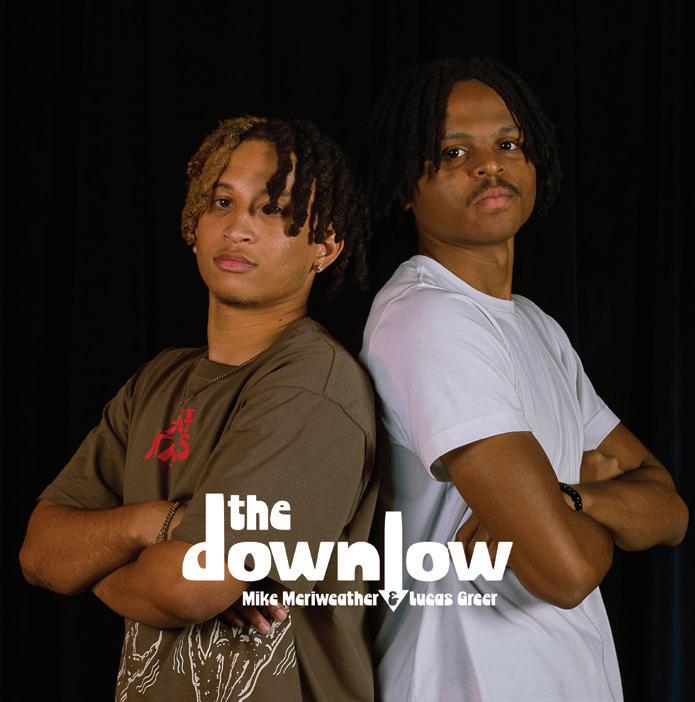
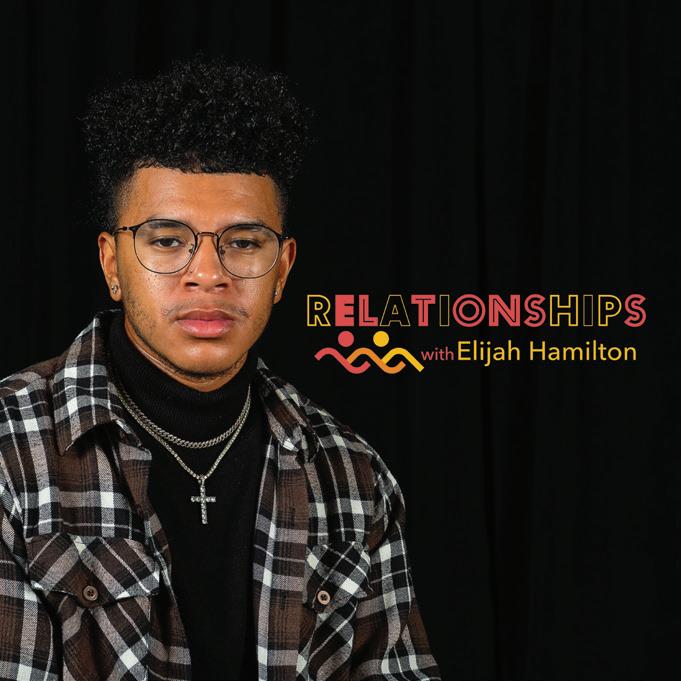





Mom Jeans is a band that has performed sold-out tours across the country. Their first few years, however, were much humbler. In an interview with the YouTube channel Booze ‘N Tunes, Eric Butler, the lead singer, explained how Mom Jeans became the band it is today. The founding members, Butler and Austin Carango, met during their first year at UC Berkeley. They bonded over their mutual love for the Midwest Emo genre as well as a shared musical background. They dove into bands like Modern Baseball and Just Friends, listening to records, albums, and EPs as they dropped together in the dorms. After a while, they started jamming together and writing their music. Mom Jeans was officially born in 2014. Butler describes Mom Jeans’ early work as “Modern Baseball rip-offs.” Modern Baseball being one of their highest inspirations, Butler and Carango based their writing on their music. Neither of the guys was very familiar with songwriting, and as Butler explained, it was a learning process. They used Modern Baseball and other bands of the genre as tools to help learn the process. Butler further explained that he felt the band didn’t find their style and voice until the release of their album Best Buds in 2016.
Best Buds was written by Butler and Carango and produced over several months. Butler told Booze N Tunes that the process was long because he was “bad at scheduling.” The pair rented one day in a studio and recorded all the drums and bass for the album in one session, with the drums taking only two hours to record for the whole album. They had sessions here and there for a few months while also working on some recordings in their dorm room as well. The album was finished and released in 2016.
When listening to Best Buds, it’s easy to assume the only inspiration for the album was a failed relationship or friendship. The songs contain themes of longing, grief, pain, and confusion, feelings often felt during the ending of a relationship. However, the album was written after one of Eric’s closest friends passed away. Jeffery Thomas Engler mentored Butler in marching band and supported Butler’s dreams from the
beginning. He encouraged the band and loved all the music they had to offer. Butler used Best Buds as a “tool to breathe” during his time of grief, even releasing the album on July 3, 2016, Engler’s birthday. Although this album was mainly used, as Butler said, to cope with the tragic loss of his friend, the lyrics are diverse and can be interpreted in many ways, letting the listener apply the art to their specific situation and relate to the artist.
The diverse themes of this album make it extremely easy to relate to. Many fans claim Best Buds as their favorite Mom Jeans album. Since the release of Best Buds, Mom Jeans gained additional members, Bart Thompson and Sam Kless (who is also a member of the band Just Friends). The four wrote and released Graduating Life in 2017, Puppy Love in 2018, and Sweet Tooth in 2018. They released Bear Market in the early fall of 2023, which is a collection of some of their most popular songs, but sang and played differently. They finished up a world tour in 2023. Their current adventures include performing at When We Were Young Fest in Las Vegas.

Tommy J Housman
A revolution is upon us. The rise of humanoid robots, machines designed to walk, talk, and work like humans, is no longer a distant vision from a sci-fi movie. It’s happening now, and it’s going to change everything. The question is: Are we prepared for it? Spoiler alert: We’re not. Yet.
Let’s start with the basics: humanoid robots are here. Companies like Agility Robotics, Tesla, 1X Technologies, Figure, and Sanctuary AI are pushing the boundaries of what these robots can do. These are machines built to move, think, and act like us. Sanctuary AI’s Phoenix™ boasts an impressive human-like range of motion, while robots like Digit from Agility Robotics are already working commercial shifts, performing tasks like unloading trucks and navigating warehouse floors.
The humanoid design is key to creating robots that can operate in environments designed for humans. Our cities, homes, factories, and roads aren’t set up for robots on wheels or tracks; they’re made for creatures with arms and legs— creatures like us. By giving robots a humanoid form, we allow them to slip seamlessly into our world, using the same tools, climbing the same stairs, and even operating the same machinery. It’s an elegant, intuitive fit for a world already built around human needs.
And the technology driving these robots? It’s evolving fast. Advances in AI, battery technology, sensors, and actuators are pushing humanoid robots to new levels of proficiency. Companies like Agility Robotics have opened facilities like RoboFab™ to mass-produce robots at scale. These robots aren’t just for research anymore—they’ve already entered the workforce in large numbers.
Ark Invest predicts that humanoid robots could represent a $24 trillion revenue opportunity globally. The math behind this prediction is simple: humanoid robots will soon be able to perform tasks that humans do for a fraction of the cost. Imagine a labor force that doesn’t sleep, doesn’t need healthcare, and doesn’t ask for overtime pay. Sounds like a capitalist’s dream, right?
Well, it’s also a potential nightmare for millions of workers. Tony Seba, one of the leading voices on disruption, emphasizes that any technology achieving a 10x cost reduction compared to existing systems is bound to cause upheaval. And humanoid robots are set to hit that threshold within the next decade. By 2035, experts predict that the cost of humanoid robot labor will drop to under $1 per hour, with further reductions to under $0.10 per hour by 2045. These machines will soon be so cheap and efficient that human labor in many sectors won’t be able to compete. What does our world look like with an abundance of cheap labor in as early as the next 5 – 10 years?
Humanoid robots could soon fill roles in construction, farming, logistics, and even healthcare. Tier 1 industries, such as production and extraction, are likely to see significant integration


of robots by 2028. Other sectors like manufacturing, retail, and warehousing are expected to follow shortly after. It’s not hard to imagine a world where robots handle the bulk of routine and dangerous work, leaving us humans to… well, figure out what comes next.
Ark Invest’s vision of the future for humanoid robots is optimistic, ambitious, and comprehensive. They predict that these robots could generate a staggering $24 trillion in revenue, split evenly between household and manufacturing applications, even before their capabilities surpass those of humans. This projection is based on the potential for humanoid robots to operate at scale, offering significant economic benefits by automating tasks across a range of environments.
Ark Invest estimates a $12.5 trillion revenue opportunity in the household robotics sector. This calculation stems from the notion that household robots can save individuals valuable time by handling everyday tasks. To arrive at this figure, Ark Invest considers:
• A household robot could perform approximately 2.3 hours of unpaid work daily.
• Multiplying this time by the global working-age population of 2.8 billion.
• Using a weighted average hourly wage of $10.75.
• Attributing half the value of unpaid time compared to paid work.
The core value proposition here is simple yet profound: by automating routine household chores, robots can free up time for individuals to engage in more productive or fulfilling activities, whether that’s leisure, creative pursuits, or even additional paid work. This has the potential to transform how we allocate our time, bringing profound changes to daily life and work.
In the manufacturing sector, Ark Invest sees a similarly significant opportunity, estimating that humanoid robots could unlock $12 trillion in revenue. The U.S. manufacturing industry alone employs nearly 12 million people, with a total payroll of $785 billion and an output of $2.4 trillion. Ark Invest envisions a future where robots could replace a significant portion of this workforce, particularly for repetitive, hazardous, or labor-intensive tasks.
Ark Invest’s projections suggest that if robots could replace all human workers and operate for 16 hours a day, U.S. manufacturing would need only 5.9 million robots to maintain the current level of output—half the existing human workforce. This highlights not just the cost savings potential but also the opportunity for significant productivity gains.
The potential for growth in the humanoid robot market is driven by several key factors:
• Labor Shortages and Onshoring: The COVID-19 pandemic exposed vulnerabilities in global supply chains, driving a push for onshoring and automation. Humanoid robots could fill the labor gaps created by this shift, especially in regions where the workingage population is declining.
• Advancements in AI: Continued improvements in AI, particularly in vision systems and object manipulation, are critical to enabling robots to perform complex tasks efficiently in real-world settings.
• Declining Production Costs: As production scales and technology matures, the cost of manufacturing humanoid robots will decrease, making them accessible to a broader range of businesses and industries.
Ark Invest isn’t the only entity eyeing the potential of humanoid robots. Morgan
Stanley projects a more conservative figure, estimating that the humanoid robot market could reach $357 billion by 2040, with a $3 trillion impact on wages by 2050. They also predict that by mid-century, there could be 63 million humanoid robots operating in the U.S. If exponential growth continues, that is 2.5 million robots a year, hitting the 5.9 million robots that could replace manufacturing jobs in less than three years.
The competitive landscape is heating up, with companies like Figure, Agility Robotics, and Sanctuary AI developing robots to meet growing demands. Agility Robotics, for example, has opened RoboFab, the first factory in the world dedicated to producing humanoid robots at scale, signaling increased investment and interest in this sector.
While specific year-by-year timelines are sparse, Ark Invest offers a broad perspective on when they anticipate significant changes. By 2030, they project that humanoid robots could generate $24 trillion in revenue, indicating widespread adoption within the next six years. Their optimistic projections are driven by rapidly declining production costs, which will make robots more affordable and accessible, “turbocharging” their integration into various industries.
Phased Adoption: Ark Invest identifies small to medium-sized businesses as early adopters of humanoid robots. These companies often face high labor costs and limited access to specialized automation, making general-purpose robots an attractive solution. This phased rollout will likely expand to larger companies as technology matures.
RethinkX offers a more aggressive timeline, predicting significant labor displacement by the late 2030s and a near-total transformation of labor markets by the mid-2040s. They

foresee a scenario where declining robot costs, improved productivity, and convergence with disruptions in energy, transportation, and food accelerate this shift, creating a positive feedback loop.
Adam Dorr, Director of Research at RethinkX, emphasizes that the labor disruption caused by robots presents an opportunity to address major environmental challenges. With robots operating at near-zero marginal cost, large-scale projects like waste cleanup, recycling, and reforestation become economically feasible.
Breaking down some of the key disruptors and hurdles.
Technological Convergence: Humanoid robots are the result of a perfect storm of technological advancements. From AI to batteries, these machines are becoming more sophisticated and affordable by the day. The convergence of key technologies has created a “labor engine” that can perform tasks with increasing precision and efficiency. But this same convergence raises important questions about control. Who gets to decide how these robots are deployed? Who ensures they are used ethically? The rapid pace of AI advancement is already outstripping regulation. We’re playing catch-up, and we’re not doing it fast enough.
Decreasing Costs: As robots become cheaper to produce, they’ll become more accessible to a wider range of businesses. What happens when a small
construction company can suddenly afford to replace its entire workforce with robots? The economic implications are huge. Entire industries will change overnight. But, as always, it’s the workingclass individuals who will bear the brunt of this disruption. Without proper planning and safeguards, we could see mass unemployment, economic downturns, and heightened inequality. There are already humanoid robots hitting the market at $16,000 each.
Legal and Regulatory Challenges: Our legal frameworks aren’t ready for humanoid robots. There’s no clear plan for handling liability, licensing, or ethical concerns. If a robot harms someone on the job, who’s responsible—the manufacturer, the employer, or the AI developer? These issues remain largely unaddressed, and regulation of the AI driving these machines is lagging, risking both overreach and underreach.
Beyond legalities, the bigger question is survival in a world where robots increasingly replace human jobs. Policies like Universal Basic Income (UBI) or a robot tax could provide answers. UBI would ensure everyone has a basic income, while a robot tax could fund social safety nets by taxing companies that replace workers with machines.
The rise of robots demands a rethinking of work, income, and economic participation. Without proactive policies, we risk worsening inequality and social unrest. Governments must not only regulate robots but also create systems that let people thrive in a future where machines do much of the labor.
Humanoid robots won’t just change how we work—they’ll change how we live. Think of a world where robots handle most of the labor-intensive tasks: cleaning, cooking, childcare, eldercare. We’re talking about a revolution in domestic life that frees up our time and energy for more fulfilling activities. But with that freedom comes the risk of societal breakdown if we don’t manage the transition well.
Without meaningful work, people may find themselves adrift. This is where policies like Universal Basic Income (UBI) come into play. UBI could provide a safety net for those displaced by robots, ensuring access to necessities even if they’re not participating in the labor market. But implementing UBI is no small feat. It requires massive political will, funding mechanisms, and, most importantly, public support. Delaying the rollout of UBI could lead to economic collapse, social unrest, and a widening gap between the rich and poor.
Then there’s the environmental angle. If we play our cards right, humanoid robots could help mitigate some of our biggest environmental challenges. Imagine robots cleaning up toxic waste sites, reforesting devastated areas, or operating carbon-capture facilities. These are labor-intensive tasks that are often seen as too costly or dangerous for human workers. With robots, we could tackle these issues head-on.
The future is coming fast. Humanoid robots are already here, and their presence will only grow. The time to act is now. If we don’t get ahead of this disruption, we risk economic instability, social unrest, and environmental degradation.
We need to rethink the social contract. Traditional ideas about work, income, and societal roles will become obsolete, quickly. We must explore policies like
UBI to ensure people can thrive in a world where robots handle much of the labor. But we also need to focus on lifelong learning and adaptability as people turn to education. Our universities are preparing for fewer 18-year-olds than ever before, expecting decreased enrollment. That may not be the case with a 30-50% labor force disruption in the next 10 years. We may be looking at an education boom. The future of work isn’t about one career for life—it’s about constantly evolving, learning new skills, and staying ahead of the robots.
As humanoid robots take over routine tasks, the value of human ingenuity will grow in importance. Education systems need to shift from the traditional focus on rote learning to fostering creativity, critical thinking, and emotional intelligence—skills that robots can’t easily replicate. Lifelong learning should be encouraged across all age groups, allowing individuals to continually adapt to a rapidly evolving job market. Governments, educational institutions, and corporations must invest in retraining programs that prepare workers for jobs in emerging fields such as AI development, robotics maintenance, and human-robot interaction.
At the same time, we must redefine the value of work. The future could allow people to engage in more fulfilling, creative, and community-driven endeavors, as the economic pressure to find any job diminishes. This requires us to embrace a broader understanding of what it means to contribute to society— whether that contribution comes in the form of traditional labor, caregiving, or artistic expression.
This isn’t just a local issue—it’s a global one. Nations need to collaborate, share best practices, and create global standards for robot deployment and regulation. Countries that embrace this change and foster innovation will be the leaders of tomorrow.
Humanoid robots are not just coming— they’re already here. The choices we make today will determine whether this technological revolution leads to a world of abundance or a dystopia of inequality and unrest. The future is in our hands, and it’s time to act.
Universal Basic Income is no longer a pie-in-the-sky idea. It’s becoming a necessary safety net for a society where full employment may not be realistic. The key challenge will be finding a sustainable model for UBI that doesn’t create dependency but instead empowers individuals to pursue meaningful, flexible work outside of survival-focused employment. Countries like Finland and pilot programs in cities around the world have already tested versions of UBI, with promising results.
However, UBI is just one piece of the puzzle. The bigger picture involves rethinking the relationship between labor, compensation, and contribution to society. The old social contract, which ties identity and self-worth to employment, may no longer apply in a world where many jobs can be automated. We need new systems that reward people for activities that enhance the well-being of communities and the environment, not just those that generate profit.
We must also tackle the legal and ethical dimensions of integrating humanoid robots into our society. As robots become more autonomous, issues surrounding liability, privacy, and data security will only grow in complexity. For example, who is responsible when a humanoid robot makes a critical mistake on a job site? If AI-driven robots collect personal data during their interactions, how do we ensure that data is protected from misuse?
Governments need to establish clear regulations for the development and use of humanoid robots. These frameworks must balance innovation with caution, ensuring that we don’t
stifle technological advancement while also safeguarding human rights and ethical standards. International cooperation will be essential in creating shared guidelines, especially as robots increasingly cross borders—both physically and digitally.
While much of the conversation around humanoid robots focuses on labor, we cannot ignore their potential environmental impact. Robots powered by clean energy could help drive largescale environmental initiatives. Imagine fleets of robots deployed to reforest vast areas, clean up ocean plastic, or manage large-scale renewable energy projects. Their ability to operate continuously without the limitations of human stamina could make previously impossible environmental goals attainable.
Adam Dorr, Director of Research at RethinkX, argues that the disruption of labor by humanoid robots presents a unique opportunity to address major environmental challenges. He emphasizes that, with robots working at near-zero marginal cost, tasks such as waste cleanup, recycling, reforestation, and carbon dioxide removal can become economically feasible on a massive scale. According to Dorr, this abundance of robotic labor could accelerate the transition to sustainable technologies, boosting efforts in clean energy production, electric vehicle deployment, and the development of sustainable food systems. Essentially, robots could act as a force multiplier, enabling humanity to tackle environmental issues at a scale and speed that would be impossible with human labor alone.
However, we must also consider the carbon footprint of producing and maintaining such robots. Building millions of humanoid robots will require significant energy and resources, and without careful planning, this could exacerbate environmental problems rather than solve them. The solution lies in coupling the robotic revolution with a green energy revolution, ensuring that the rise of robots doesn’t come at the expense of the planet. This means
prioritizing the use of renewable energy sources in the production process, designing robots with recyclability in mind, and developing systems that minimize resource consumption throughout their lifecycle.
The convergence of robotics and clean energy could ultimately help redefine what is possible for environmental conservation. By leveraging the productivity and endurance of robots, we can aim for ambitious environmental targets that have long seemed out of reach. Yet, this vision will only be realized if we take a holistic approach, addressing both the opportunities and challenges that come with integrating humanoid robots into our efforts to build a more sustainable world.
The rise of humanoid robots is not just a local issue—it’s a global challenge. Countries that invest in robotics and AI today will lead the world tomorrow. But this isn’t just about economic competition; it’s about building a shared future where the benefits of technology are distributed equitably. Nations need to collaborate on creating international standards for robot regulation and employment, ensuring that no country is left behind in this technological shift.
Global cooperation will also be crucial in addressing the potential risks of military and geopolitical uses of humanoid robots. As with nuclear technology, robots can be used for both constructive and destructive purposes. We must act now to prevent an arms race in robotic warfare, where nations deploy robots not just in factories but on battlefields. International treaties and agreements on the ethical use of robots will be vital to avoiding a future where the robotic revolution causes more harm than good.
Ark Invest’s projections highlight the transformative potential of humanoid robots, envisioning a future of increased productivity, economic growth, and a world where robots handle routine tasks, freeing humans for more
meaningful pursuits. Yet, these benefits come with profound societal challenges. Without proactive measures, the rise of robots could deepen economic inequality, disrupt labor markets, and exacerbate environmental issues. The path forward requires planning to ensure that the benefits of this technology are equitably shared.
As companies invest in developing and deploying humanoid robots, the urgency of thoughtful discourse on the ethical, social, and economic implications cannot be overstated. If managed responsibly, this robotic revolution could herald an era of unprecedented freedom, productivity, and prosperity, enabling humans to redefine their relationship with work, leisure, and the environment. Without deliberate action, the risks of job displacement, social inequality, and environmental degradation could overshadow these benefits. The next decade will be critical in deciding how we navigate these disruptions and whether we can realize the potential of a world transformed by robots.
Humanoid robots are no longer a distant dream—they are a present reality, poised to reshape our world faster than many anticipate. The real question is whether we will take control and proactively shape this future, or passively allow it to shape us.
To thrive in a robot-driven world, we must embrace the opportunities they present—higher productivity, innovative environmental solutions, and new paradigms for living. But we must also confront the challenges head-on—mass unemployment, social unrest, inequality, and the risk of environmental harm. By facing these issues directly, we can ensure that the robotic revolution doesn’t just benefit a privileged few but uplifts everyone, creating a more equitable, sustainable, and prosperous future.
The rise of humanoid robots is inevitable, and trying to halt it would only hinder progress. Instead, we should focus on guiding this revolution, so it enhances human life across the globe. By rethinking our economic models, investing in green energy, and fostering ethical frameworks for robot integration,
we can steer this technological wave toward a future where everyone benefits, not just a select few. In doing so, we won’t just adapt to change; we will lead it, building a world that truly reflects the best of human ingenuity and potential.

The Optimus humanoid robot, or Tesla Bot, is designed as a versatile, general-purpose robot for tasks typically done by humans.
The NEO humanoid robot by 1X Technologies is designed as an intelligent, general-purpose assistant for various environments.


The Digit humanoid robot by Agility Robotics is designed for versatile, real-world tasks, focusing on adaptability and ease of deployment across various environments.
The Figure 02 humanoid robot by Figure is designed as a versatile, general-purpose robot capable of performing a range of tasks across various industries.


The Phoenix humanoid robot by Sanctuary AI is designed as a versatile, general-purpose robot capable of performing tasks in various environments.
For a deeper dive scan QR code or visit crescent.evansville.edu
Drawing and coloring offer a powerful, accessible way to relieve stress, especially during finals when students experience heightened pressure. Studies show that the simple act of creating art can significantly reduce anxiety by focusing attention on color selection and patterns, helping the mind shift from overwhelming thoughts to the present moment. Coloring in particular activates mindfulness, as it encourages concentration on the task at hand, slowing down racing thoughts and reducing physiological stress responses like elevated heart rate and muscle tension. Mandalas and other structured patterns can enhance this effect by providing a sense of order and calm, which helps counter the chaos often felt during intense study periods. Incorporating short coloring sessions into study breaks has also been shown to improve focus and lift mood, offering a restorative mental break that leaves students more prepared to tackle challenging academic tasks


Chance McDowell, a freshman Creative Technologies major, and Autumn Mosley, a freshman Biology Pre-med major, both from the University of Evansville, host the podcast Unscripted. Active in Student Media at the university, Chance and Autumn bring listeners a spontaneous, dynamic mix of topics. Each week, they cover pop culture, current events, drama, and more, offering fresh perspectives and lively discussions. Tune in weekly to catch their latest take on trending topics and everything in between.